Pathfinder: Kingmaker is a role-playing video game developed by Owlcat Games and published by Deep Silver, released on September 25, 2018 exclusively for PC, Linux, and Mac. It is based on the books of the same name, written by James Jacobs and F. Wesley Schneider. Few video game RPGs are actually based on pen and paper RPG modules; off the top of my head, the only others I know of are Pool of Radiance (1988) and The Temple of Elemental Evil (2003). Legendary game designer Chris Avellone is credited as a writer for the Pathfinder: Kingmaker video game which we are reviewing here. So while this was a Kickstarter funded debut game for Owlcat Games, RPG fans had every right to keep expectations high for this one.
For those who don’t know, Pathfinder is a tabletop role-playing game based on Dungeons & Dragons 3.5, created by Paizo. Pathfinder: Kingmaker is the first Pathfinder video game RPG. Its general plot is similar to the aforementioned RPGs that were also based on tabletop games; a group of adventurers answers the public call for aid. Only the rewards for are greater; clear out a vast expanse known as The Stolen Lands of the bandits that have taken control over it, and claim this land as your own barony. Pathfinder: Kingmaker makes it clear from the start that you will succeed at this task and manage the barony as in a strategy game, and the title makes it no surprise that it eventually grows into its own kingdom. Thus, with Pathfinder: Kingmaker we have a unique mix of RPG and strategy game, really taking the strategy gameplay much further than any other RPG such as Pillars of Eternity and Neverwinter Nights 2.
While Pathfinder: Kingmaker is the debut title for Owlcat Games, it was created with lofty ambition, clearly designed not just to be a soulless nostalgic trip (I’m looking at you, Pillars of Eternity series as well as Tyranny and Torment: Tides of Numenera), rather it was designed to be a faithful adaptation of the pen and paper game, designed to bring newfound satisfaction to the very demanding hardcore “cRPG” crowd. And there is no bigger critic from this crowd than myself. Personally, I walked away from every video game RPG in the last 8 years (not counting expansions) disappointed. Wasteland 2 had a good start, but it seemed as if the developers went on strike and inexperienced interns had to finish the second half of the game which devolved into a monotonous series of menial tasks after menial tasks. The Pillars of Eternity series, Tyranny, Torment: Tides of Numenera, and Divinity: Original Sin series (yes, even Divinity: Original Sin 2) are all afraid of role-playing. They railroad you, to varying degrees, into playing one type of personality. You cannot be evil in Pillars of Eternity or the Divinity: Original Sin games, and when story-defining moments occur, the games often force only one choice on you, one way to define your character and only one course of action to take. And you always have to take action, rather than sit back and be indifferent. These games are all afraid of role-playing.
Gamers have forgotten what role-playing is. I consider the last great video game RPG to be Fallout: New Vegas based on objective measurements of role-playing (and for other reasons), but truth be told the average gamer is not strongly attracted to its vast role-playing potential, evident by Fallout 3 being more popular and more well-received and only a relatively small group of people complaining of the complete lack of role-playing in Fallout 4. It is also evident in how well received The Elder Scrolls V: Skyrim was, when in reality it is a significant downgrade in role-playing and an even bigger downgrade in writing quality compared to The Elder Scrolls III: Morrowind. Role-playing has always been niche, but role-playing video games are not always as niche.
So my question when going into Pathfinder: Kingmaker was, will this be the return to form for RPGs? The last time I had such expectations was for Torment: Tides of Numenera, and it fell gravely short. It wasn’t terrible like Obsidian’s Tyranny was, it was just completely mediocre, and most of these other examples of disappointing RPGs I’ve cited are all absolutely soulless husks. No soul, no passion. The only exceptions are the first half of Wasteland 2, and the gameplay mechanics of the Divinity: Original Sin series as well as the visual design of Divinity: Original Sin 2.
Still, those are not enough. Why is it that no fantasy party-based RPG like these have ever attempted to reach the heights of the Neverwinter Nights series, which tried and succeeded at “doing it all?”
With that being said, Pathfinder: Kingmaker also does not try to be the next Neverwinter Nights. It does not have multiplayer, and it’s obviously going to limit its story scope to the Kingmaker adventure path (books) hence the name, and there is nothing wrong with this. Multiplayer would have been nice though. The RPG video game genre is in such a dire situation from an artistic perspective that it does not take another juggernaut like Neverwinter Nights to bring it back to form (shout out to Beamdog for releasing Neverwinter Nights: Enhanced Edition in 2018). But as to my original question, is Pathfinder: Kingmaker the return to form for video game RPGs? To be honest, I’m not sure. But as we take a closer look, perhaps we can help you decide.
Writing, Role-Playing (Spoilers)
We will keep spoilers in spoiler tags so that you cannot accidentally read them. Pathfinder: Kingmaker features a lengthy intro, full of action but lots of story build-up as well. It is not a linear RPG at all, almost open world and nearly as open ended as the classic Fallout games or Arcanum: Of Steamworks and Magick Obscura but not as large. Nothing is seamless about Pathfinder: Kingmaker’s world design either; lots of long loading screens such that it has become a common complaint, with some players going as far as to calling it a “loading screen simulator.” Individual maps aren’t huge and more in the realm of Dragon Age: Origins or the Star Wars: Knights of the Old Republic series in size, but not as linear as most of those. It will take approximately 80 hours minimum to finish the story, and there is no playing after the main quest. Most people on forums and such will say it’s a 100-130 hour game, which it easily could be if you spend a lot of extra time exploring since there are so many locations in the world.
Despite the long length, the game does a good job getting more interesting as it goes on. I feel the last two chapters are a bit dragged out though. To clarify which chapters I mean, here it is in spoiler tags for those who have completed the game:
Story pacing is quite good overall and no doubt its book origins help with this (too many bad examples of similarly long video game RPGs that happen to have no source material, many of which have been named already). The bigger pacing issues are gameplay-related, with Pathfinder’s slow leveling and level 20 cap, but more on that later.
Early on it makes it clear that political intrigue would play a big part in the story, as the name of the game suggests. It takes place primarily in The River Kingdoms, located in Avistan on the planet of Golarion. See the map below for reference.
Golarion is… an overrated campaign setting. Pathfinder is pretty big in the pen and paper world and its fans really think it is some kind of masterpiece, but it’s quite clearly the result of Paizo taking what they could from Wizards of the Coast. Leftovers. The geography is varied enough in Golarion, but it is really lacking in great, significant stores as well as exposition for different groups and cultures. It has no character, unlike Forgotten Realms.
The First World is another major setting. It was a sort of “first draft” world created by the gods, so it is chaotic, always changing, and does not abide by our laws of science. It is a sort of equivalent to D&D’s Feywild, but a bit too trite in its attempts at telling a story of its own.
Considering what was just said about Golarion, the setting of Pathfinder: Kingmaker is not particularly interesting. It’s not terrible, it just lacks character especially on the Prime Material Plane (e.g. Golarion). All sorts of foreign nations and some historic events are written about, but again, without much character. It doesn’t help that the visual design of the majority of the game is unremarkable, same for the level design. World building is not a strong point of Pathfinder: Kingmaker.
Dialogue quality is also not a strong point. The intro speech by Jamandi Aldori is boring when it really shouldn’t be. Dialogue quality isn’t horrendous like that of Obsidian’s Tyranny, it’s just unremarkable. Largely unvoiced with lots of reading and descriptive writing, but of course the descriptive writing lacks the excellence of that from Planescape: Torment. It’s a little bit better than the likes of Pillars of Eternity however.
The game features many sequences like the ones shown above; illustrated interactive moments in a book, replicating pen and paper RPGs more closely. I first saw this type of gameplay in Pillars of Eternity I believe, and since then multiple video game RPGs have used it. I don’t particularly care for it despite the importance of role-playing in them; if I wanted this, I’d play a pen and paper RPG, not a video game.
Being such a long game, it is no surprise that Pathfinder: Kingmaker has many antagonists, many of them hiding behind the shadows. And lots of betrayal, but most if not all of which are really easy to foresee. The first antagonist is the bandit self-proclaimed king known as The Stag Lord; defeating him makes The Stolen Lands your barony. None of the antagonists are particularly interesting or original, in fact the main antagonist for the majority of the game and the entire story behind this character is heavily borrowed from Planescape: Torment. But hey, they are borrowing from the right RPG (the best written RPG ever), and they are borrowing without blatantly and lazily copying like Torment: Tides of Numenera did. I will elaborate on this, with heavy spoilers, below in spoiler tags.
It is not a great story, but not terrible. It is lacking in thematic depth and has no particularly well written characters, although attempts were made unlike with most games, so respect is due.
The companions of Pathfinder: Kingmaker are written with slightly more character and care than most other recent RPGs, but they don’t approach the character development BioWare is known for, let alone something like Knights of the Old Republic II. I cannot point to any one character from the game as being particularly well written, but none are awful. They are all clearly bound to an alignment, like chaotic good for Linzi, the Bard who chronicles the entire story and your first companion. If you keep this in mind, nothing any character does can surprise you really.
There are some noteworthy silly moments, like how you can hire people (mostly companions) as advisors for your barony when you hardly know them, but hey I guess that’s a role-playing option. Some characters are also a bit too stupid at times (e.g. the character Jhod simply wondering if the Temple of the Elk, mysteriously filled with evil creatures, has anything to do with an evil fog covering the area), though this game is not the biggest offender there.
Probably the most consistently annoying thing about this game’s writing for me is how death is treated as permanent. When important characters die, they’re gone and it’s a tragedy, like in real life. Except… this is Pathfinder, and I played as a Cleric with both the Raise Dead and Resurrection spells. Here is Pathfinder’s official description of the Resurrection spell:
“This spell functions like raise dead, except that you are able to restore life and complete strength to any deceased creature.The condition of the remains is not a factor. So long as some small portion of the creature’s body still exists, it can be resurrected, but the portion receiving the spell must have been part of the creature’s body at the time of death. (The remains of a creature hit by a disintegrate spell count as a small portion of its body.) The creature can have been dead no longer than 10 years per caster level. Upon completion of the spell, the creature is immediately restored to full hit points, vigor, and health, with no loss of prepared spells. The subject of the spell gains one permanent negative level when it is raised, just as if it had been hit by an energy-draining creature. If the subject is 1st level, it takes 2 points of Constitution drain instead (if this would reduce its Con to 0 or less, it can’t be resurrected). You can resurrect someone killed by a death effect or someone who has been turned into an undead creature and then destroyed. You cannot resurrect someone who has died of old age. Constructs, elementals, outsiders, and undead creatures can’t be resurrected.”
Resurrection and Raise Dead are only used for raising companions who have been slayed in combat. They cannot be used freely. Yet according to the description of the spell (and the in-game one does not dispute any of it even if it isn’t as detailed), my character who had 15 caster levels as a Cleric (5 Cleric and 10 Mystic Theurge) should have had the ability to resurrect someone who was freaking disintegrated 150 years ago.
Now you may ask, what video game RPGs do allow for you to use such powerful resurrecting spells so freely? My answer: not enough, but I believe you can in Planescape: Torment, you should be able to in most expansions for Neverwinter Nights since they have full PvP enabled, and then there is Arcanum: Of Steamworks and Magick Obscura which is legendary for how it handles this. In Arcanum, you can kill and revive every important plot character, and this will change how the plot plays out.
You may also ask, aren’t other high fantasy RPGs guilty of this criticism as well? I will say not all are, and most are not guilty to the same degree. Lots of D&D video games for example will either kill off important characters exactly when the player wants them to die, therefore the player is never interested in resurrecting them, or important characters are clearly utterly destroyed beyond the capability of even the Resurrection spell. And of course, other fantasy RPGs don’t even give you such power in the first place.
Role-playing is the most noteworthy part of Pathfinder: Kingmaker’s writing, though it goes to show that lots of role-playing without excellent writing doesn’t lead to an enthralling story experience. It is certainly fun though; if you’re the type of gamer who enjoys playing as a sadistic, chaotic evil character who acts on his evil whims, you can do that here but you cannot do that in 99% of the RPGs released in the past 8 years including all the most popular ones. Or do you want to be a neutral, indifferent character who does not want to be a hero and doesn’t throw himself to the fire at every chance? You can do that here, but you cannot do that in 99% of the RPGs released in the last 8 years. I personally played as a Cleric to Calistra, goddess of lust and revenge, and my character was all about vengeance and retribution.
With that said, why is Calistra the goddess of lust and revenge? Kind of an odd mix. I never liked Pathfinder’s deities, the ones in Forgotten Realms to be more logical and consistent and with much more writing behind them (not surprising given the age of Forgotten Realms). For example, lust and revenge refer to two different deities in Forgottem Realms, as they should: the former referring to Sharess, goddess of hedonism, sensual fulfillment, festival halls, and cats. A much stronger relation between those things. While Hoar is the God of revenge, retribution, and poetic justice. But I digress.
Alignment and Persuasion skill (which leads to Bluff, Diplomacy, and Intimidate dialogue options) are the most frequent checks that appear in dialogue, along with different Knowledge and Lore checks (Knowledge – Arcana, Knowledge – World, Lore – Nature, Lore – Religion). Physical checks for Athletics, Mobility, Stealth, and Trickery are also common (the first two being more common than the other two). Some religious choices can materialize as well (my personal playthrough unlocked as many of these as possible, being a Cleric for Calistra), and many dialogue options will be flat out unavailable to you if you don’t meet the requirements (the game tells you that you don’t meet the requirement and you cannot select it).
Pathfinder: Kingmaker doesn’t have the most role-playing ever, and not even close as you cannot act totally freely; you can’t go around attacking whoever you want or resurrecting whoever you want. Random NPC reactions to you are the same as most other RPGs; generic and scripted based on story progress (e.g. they will greet you as their baron and call you “Your Grace”, but as a king they will kneel and call you “Your Highness”). None of the insane responsiveness of Fallout 2 can be found here, or in any other video game for that matter. But every single quest has multiple paths to completion or even failure, in fact you can fail more quests in this game than the majority of other RPGs and still beat it.
The ending is the traditional video game RPG slide ending, presented in the form of a book, with many slides and most of them being the results of your role-playing choices and actions, and there are far more than just two variations per slide. This ending seems to have satisfied all of its players, and rightfully so.
Also present is a lot of reading material; not so much books as there are prompts like the once pictured above, which fill out your encyclopedia.
Someone looking for an interesting literary experience will only find loose traces of it in this game, in the form of the overall plot being a great concept with great pacing for the most part. Better writers could have taken this concept, filled it out with more interesting characters and better world building (Golarion is very forgettable), and a masterpiece could have been crafted from this blueprint. Instead, we get a story experience that is just alright, but thankfully with a lot of role-playing. Role-playing that far surpassed my expectations.
Gameplay
The gameplay of Pathfinder: Kingmaker, an isometric party-based RPG, is what I was initially most excited to see. Despite the many, many, and did I say many bugs that are still present in the game today (at the time of this review’s publication date), it surpassed my expectations here once again. It is quite a faithful video game implementation of Pathfinder. When it comes to diversity of character builds and combat diversity, Pathfinder: Kingmaker completely humiliates every party-based high fantasy RPG except for Neverwinter Nights, Neverwinter Nights 2, The Temple of Elemental Evil, and to a lesser extent Arcanum: Of Steamworks and Magick Obscura. That’s it. Pillars of Eternity isn’t weak in these regards but it’s still objectively less than a quarter of Pathfinder: Kingmaker in many crucial ways.
Get those bugs fixed, and then Pathfinder: Kingmaker will be arguably top tier when it comes to high fantasy party-based RPG combat, rivaled only by the Neverwinter Nights games and The Temple of Elemental Evil (which is actually far more buggy so… nevermind?). Though I’ll always take issue with it being 80+ hours long and being capped to level 20, which I will elaborate on soon. Like other recent RPGs, Pathfinder: Kingmaker lets the player have a six-person party, opposed to the smaller four-person party from most 2000s RPGs.
This is an isometric game with 3D graphics, though for some odd reason you cannot rotate the camera, as if it’s pretending to be 2.5D. Really, really weird, and an immediate downside. Camera rotation brings not only immersive advantages but tactical ones too. Boy do I hate fighting enemies I can’t see due to the camera. Sure, the game lets you effectively track the battles just fine, but then it loses immersion when you’re fighting like this:
Most other video game RPGs like the Dragon Age games and Tyranny have what boils down to a fighter/warrior type of character build, a rogue/thief, and a mage. And spellcasting is all inherently the same, just different types of spells but the variety of spells in these games are quite poor, with almost all offensive spells being mere elemental spells with only a few mind affecting ones, and generic healing spells (or none in Dragon Age: Inquisition). Those are the shining examples of neutered minimal effort fantasy RPG gameplay. Pathfinder: Kingmaker is the opposite.
Pathfinder: Kingmaker leverages its source material to leave all these other RPGs in the dust. Currently, the following classes are present:
- Alchemist
- Bard
- Barbarian
- Cleric
- Druid
- Fighter
- Inquisitor
- Magus
- Monk
- Paladin
- Ranger
- Rogue
- Sorcerer
- Wizard
- Kineticist (paid DLC)
As well as the following prestige classes which cannot be chosen from the start:
- Arcane Trickster
- Dragon Disciple
- Duelist
- Eldritch Knight
- Mystic Theurge
- Stalwart Defender
Many of these classes are implemented better than any D&D game, yes some even surpassing the implementation in the Neverwinter Nights games! And the number of classes isn’t just fluff like it is in Divinity: Original Sin series; almost every single base class has fundamentally different gameplay mechanics. While a high amount of the classes in the Divinity: Original Sin games are just different types of spellcasters.
Alchemist is self-explanatory, even though this is one of few video game RPGs to not have any sort of crafting. Alchemists rely on all sorts of different alchemical solutions they make, from many different kinds of bombs with different effects, to mutagens to bolster physical abilities at the cost of mental abilities, to cognatogens for bolstering mental abilities at the cost of physical abilities. They also have limited spellcasting with its own spell list. Bards use their Bardic Song/Performance ability to bolster the party, and have Charisma-based spellcasting similar to a Sorcerer but weaker and with a different spell list including some unique spells (and of course, certain spells are unlocked at different times for Bard). Barbarians are damage dealing melee units with the unique Rage ability, Clerics are divine spellcasters which is fundamentally different than arcane spellcasting, not to mention they get unique abilities based on the deity they worship.
Druids are servants of nature and divine spellcasters, who can summon powerful animal companions and transform into different shapes and forms. Fighters are general martial soldiers or soldier-like warriors with many different paths they can take, Magus is the ultimate spellsword class (no game has a “spellsword” as good as Pathfinder’s Magus, not even close). Monks are wise, methodical, cerebral and disciplined practitioners and there are various paths they can take and orders they can belong to, but they forego armor and most weapons. Paladins are divine warriors with very limited divine spellcasting, Rogues are sneaky thieves with unique combat abilities plus the sneak attack ability, Sorcerers are innate arcane spellcasters whose power comes from their bloodline, while Wizards are scholarly arcane spellcasters. Kineticists are one of a kind, living channels for elemental energy. They have innate elemental powers that are not spells, and sort of similar in mechanics to Warlock eldritch essences, and they can burn themselves out by using them too much (solving the Warlock balance issue from D&D).
All of the prestige classes are also excellent, except for Eldritch Knight which just has no place in Pathfinder really since Magus makes it obsolete. I would like more prestige classes though, there are many awesome ones not present here that should be, like Technomancer, Arcane Archer, Shifter, among others, but then again multiclassing is gimped in Pathfinder by the level 20 cap which I have mentioned several times. I will now elaborate: as with any other RPG, in Pathfinder: Kingmaker you gain XP for everything you do that succeeds; completing a task, disarming a trap, picking a lock, successfully persuading someone. Gain enough XP and you level up, improving your skills and rarely adding a point to an ability score, and for every odd level choosing a new feat.
This game follows the “Medium” character advancement table from Pathfinder, though I wonder if Aasimar and Tiefling follow the Slow one? I’m not sure, but the table can be found here. By capping your level to 20 in an 80-130 hour game, you will inevitably spend a lot of time on each level thus spending many hours with the same spells (if applicable) and same selection of abilities. Even worse is it sort of defeats the purpose of multiclassing, or at least it enforces penalties if you choose more than one class. For example, I played a Cleric/Empyreal Sorcerer/Mystic Theurge, one of my favorite possible character builds in D&D. Due to being limited to level 20 however, I ended the game with 10 levels in Mystic Theurge (the max, no issues here), 5 in Cleric, and 5 in Sorcerer. This means I was only able to unlock level 8 spells, no level 9 spells. On the one hand, this is more balanced since Mystic Theurge casts both arcane and divine spells, but on the other hand it is gimped.
Either way, only 20 levels in an 80-130 hour game leads to lots of stagnation. Dragged out progression. This will lead to boredom. With Pathfinder, Paizo tried to fix what isn’t broken. Epic levels are so much fun in D&D 3.5. 80 hours is about the length of Neverwinter Nights 2’s original campaign and Mask of the Betrayer combined, which is a level 1-30 experience. Leveling up isn’t super quick, it’s just enough.
And in Pathfinder: Kingmaker, there is a plot related story reason as to why you should surpass level 20, which I will put in spoiler tags:
Worse is that there doesn’t appear to be an easy way to remove the level 20 cap, although the game is moddable.
Continuing on, the skills in Pathfinder: Kingmaker are as follows:
- Athletics (based on Strength (STR) ability score)
- Mobility (based on Dexterity (DEX) ability score)
- Stealth (based on Dexterity (DEX) ability score)
- Trickery (based on Dexterity (DEX) ability score)
- Knowledge: Arcana (based on Intelligence (INT) ability score)
- Knowledge: World (based on Intelligence (INT) ability score)
- Lore: Nature (based on Wisdom (WIS) ability score)
- Lore: Religion (based on Wisdom (WIS) ability score
- Perception (based on Wisdom (WIS) ability score)
- Persuasion (based on Charisma (CHA) ability score)
- Use Magic Device (based on Charisma (CHA) ability score)
Also noted above are most of the ability scores, the one not mentioned being Constitution (CON) which affects your hit points (health) and fortitude saving throws. So many RPGs these days forego skills or have less than a half-assed skill implementation, like Dragon Age, Pillars of Eternity, and Tyranny. Not Pathfinder: Kingmaker. It does leave out a lot of important Pathfinder/D&D skills and mixes too many together I think, but it has the main ones for a game without crafting.
The playable races of Pathfinder: Kingmaker are as follows:
- Aasimar
- Dwarf
- Elf
- Gnome
- Half-Elf
- Half-Orc
- Halfling
- Human
- Tiefling (paid DLC)
Far more than most video game RPGs, but not the most and it lacks subraces which is a big downside from a role-playing perspective. Race will of course affect dialogue somewhat, but ultimately not very significantly.
When it comes to armor, Pathfinder: Kingmaker has the most common types from Pathfinder and D&D, all but one are the same exact ones as the Neverwinter Nights games:
- No armor with various types of clothing
- Padded Armor (Light Armor)
- Leather Armor (Light Armor)
- Studded Leather Armor (Light Armor)
- Chain Shirt (Light Armor)
- Hide Armor (Medium Armor)
- Scale Mail (Medium Armor)
- Chainmail (Medium Armor)
- Breastplate (Medium Armor)
- Banded Mail (Heavy Armor)
- Field Plate (Heavy Armor)
- Half Plate (Heavy Armor)
- Full Plate (Heavy Armor)
- Light Shield
- Heavy Shield
- Tower Shield
And remember, these are just the TYPES. Each one of those has many different items, though not nearly as many as the Neverwinter Nights games given the budget. Likewise, it lacks model diversity; Adamantine armor and weapons often aren’t even black! But at least equipped items really show up on your character. It lacks model diversity but what they have is great, your characters look like real adventurers as drawn up by talented artists over the past decades.
Weapon diversity is outstanding. The following melee weapon types are in Pathfinder: Kingmaker:
- Dagger
- Punching Dagger
- Light Mace
- Sickle
- Club
- Nunchaku
- Light Hammer
- Handaxe
- Kukri
- Sai
- Light Pick
- Kama
- Shortsword
- Longsword
- Dueling Sword
- Bastard Sword
- Rapier
- Scimitar
- Estoc
- Falcata
- Elven Curve Blade
- Tongi
- Flail
- Battleaxe
- Dwarven Waraxe
- Warhammer
- Heavy Mace
- Shortspear
- Longspear
- Spear
- Quarterstaff
- Trident
- Javelin
- Bardiche
- Earth Breaker
- Falchion
- Heavy Flail
- Glaive
- Greataxe
- Greatsword
- Greatclub
- Scythe
- Orc Double Axe
- Fauchard
- Gnome Hooked Hammer
- Two-Bladed Sword
- Dwarven Urgosh
And the following ranged weapons:
- Dart
- Sling
- Sling Staff
- Light Crossbow
- Heavy Crossbow
- Shortbow
- Longbow
- Composite Shortbow
- Composite Longbow
That has to be the most weapon types of any game, and remember those are just the types; there are multiple items for each. Not a ton for each though of course, and again each item within each type does not have its own unique model, as expected for a low budget game. Heck, if I were making a Pathfinder or D&D video game on a $300 million budget, I wouldn’t even include some of those, but the variety is always welcome!
Pathfinder: Kingmaker is industry leading in one respect: difficulty customization. The screenshot below shows most of it.
The general gameplay and UI customization is also among the very best ever.
You can resize or hide some UI elements in-game like the combat log (which logs dialogue and more as well) and side hotbars. The UI is outstanding overall and the inventory is one of the best ever, with all the filters you could ever need.
I will say this game also has the best resting mechanic of any RPG. You assign party members to different roles, however you see fit, with their skills obviously coming into play, and as usual for modern RPGs, resting can use up “Camping Supplies” though not if you assign a hunter who succeeds at hunting. There is also party banter when you rest, and seemingly a lot of it since I don’t think I heard any banter more than once in my 90 hour playthrough. Resting even leaves behind empty fire pits and such.
Enemy diversity in Pathfinder: Kingmaker again absolutely stomps all over every unmodded high fantasy RPG except for the Neverwinter Nights games, The Temple of Elemental Evil, and Arcanum. You will fight all sorts of creatures, from basic wild animals to humans, humanoids, monstrous humanoids, magical beasts, various sorts of undead, various sorts of fey, constructs, elementals, were creatures, dragons, demons, daemons, devils, etc. This, combined with the faithful adaptation of Pathfinder rules leads to a much more tactical combat experience than any non-D&D high fantasy RPG barring Arcanum which is so good that you’d think it was tabletop based. Different creatures have different weaknesses, strengths or even immunities, to a much greater extent than your Pillars of Eternities, your Dragon Ages, your Tyrannies, your Divinities. If you’re well-read on high fantasy, then this won’t shock you. Were creatures are vulnerable to silver, trolls can only be killed by fire/acid, undead are largely immune to cold damage, metal golems (and there are different kinds) have damage reduction that can only be bypassed by adamantine and maybe magic.
But I will say, BRING COLD IRON WEAPONS WITH YOU AT ALL TIMES. Despite the high amount of enemy diversity, the main enemies are fey, and lots of fey creatures have damage reduction and/or regeneration that can only be bypassed by Cold Iron weapons.
Crafting mechanics are all the rage these days, and Pathfinder: Kingmaker chose to omit them but I wish it didn’t. Crafting is overly grindey, tedious, and not rewarding enough in most games, but this is not the case in D&D and Pathfinder where it is super rewarding.
Boy do I love me some gore. Pathfinder: Kingmaker has awesome gibs for when an NPC is killed by a critical hit. And excellent visual effects and particle effects in general, which we’ll look at more a bit later.
Some of the flaws I’ve discovered beyond what was brought up already are: you can’t successfully destroy most doors and many containers (this limits player agency/freedom and role-playing), you can’t put items into all containers (only certain kinds), you can’t set traps or pickpocket, and the biggest flaw of this game’s combat is balance. It has a lot of severely unbalanced encounters, and I’m not talking about you going to a place that’s too high level since you’re supposed to return later (this is not a flaw).
The second biggest flaw when it comes to combat is enemies spawning out of nowhere. In many battles, the game will PRETEND that you’re surrounded by sneaky or even invisible rogues, yet you can cast the True Seeing spell on yourself and still see nothing. They spawn out of nowhere all around you, unfairly sneak attacking your party when you should’ve seen them with True Seeing or See Invisibility. Artificial difficulty is pretty much always bad design, and this is no exception.
So some dumb synthetic difficulty exists unfortunately. Thankfully most battles don’t suffer from that nonsense, but too many do. One nice touch is how big a factor weather and terrain play on movement, more like tabletop RPGs than any other video game. Storms and bad terrain impede your movement more, making Rangers more valuable than in any other video game. Lightning can also hit you.
Everything we have just discussed is related to the typical party-based RPG gameplay, but Pathfinder: Kingmaker has a strategy layer that goes deeper than any other RPG of this type. Barony/Kingdom management is the name of the game. It actually feels like playing a strategy game, unlike other RPGs.
You must claim regions to expand your kingdom, and in so doing you must create a capital… village in each region (and you can only create one). Villages can later be upgraded to towns, then to cities. The remarkable thing about this is, an actual appropriate visual change takes place when you upgrade to a city. See the two screenshots below; first is the actual capital town, then as a city.
You can build buildings in each settlement, with different buildings being unlocked depending on how you complete certain quests (or whether or not you complete those quests at all), and each building affects different Barony/Kingdom stats.
As a ruler, you will have tons of projects to expand, scout, and more. Opportunities and problems will arise. This all includes diplomatic missions as well. These projects, tasks, and opportunities (the latter is not supposed to have negative consequences upon failing, but can) you will assign to your advisors who you choose, though some require your intervention as well which will keep you occupied for the duration of the project. The chance of success is dependent on the difficulty of the mission versus the project owner’s relevant rating as an advisor, which is partially based on a skill appropriate to that advisory position, as well as the stat rank of that position (e.g. the Barony/Kingdom’s rating in Loyalty).
Projects cost money of course, and hopefully earn money in the long run. Barony/Kingdom management uses a currency that is separate from your party’s gold, called Build Points, though you can buy Build Points with gold.
This strategy gameplay is surprisingly well executed. I actually felt like I was playing a strategy game, not an RPG, but you can leave and return to adventuring whenever you want. It’s unrealistic really, being an adventurer-baron or adventurer-king, but that’s expected and well within suspension of disbelief.
You may not be able to fill every advisory position, depending on the choices you make with your companions (for example, I killed the only companion eligible for one role). Your Barony/Kingdom has an “Unrest” statistic, and if this goes down below “Riots” then your Kingdom will be destroyed and the game will end. There is no danger of this early on, but late game the danger is very real so here is my advice: focus early on upgrading all Barony stats as much as possible. There is a flaw here as well: the success of your Kingdom can sometimes, particularly late in the game, be too dependent on luck (dice rolls). Your Kingdom can go from Stable to Destroyed overnight, unrealistically strong instantaneous consequences.
Role-playing also materializes in how you manage your Barony/Kingdom (which you have the choice of naming). For example, I emphasized cultural freedom and strong military, and these things were reflected perfectly in the ending I received upon completing the game.
Audio/Visuals
Pathfinder: Kingmaker is an isometric but 3D game built on Unity Engine. It looks outdated as expected, nowhere near the fidelity of Divinity: Original Sin 2, and it’s only marginally better than 2.5D since you still can’t rotate the camera for some reason. A game with outdated graphics quality relies more on art design to stand out visually, which is how old games like The Elder Scrolls III: Morrowind can still look remarkable. Pathfinder: Kingmaker sadly falls short of that.
The general outdoor visuals throughout the game are not very pretty to look at. At best, they just look alright. There isn’t a whole lot of terrain diversity; mostly woodlands, with some highlands and cliffs. It looks and feels drab and repetitive. It fares better when it comes to indoor architecture which consists of caves, nice looking manors, and mostly two different types of ruins (Cyclopean and First World). One or two of the dungeons are particularly well designed.
Some of the games most interesting visuals come from the First World, with its bizarre overgrown vegetation. Still nothing unique or extraordinary however.
Once nice touch however are that seasons actually change. Snowfall occurs and you actually leave footprints in the snow.
Creature design is stellar, some of the best I’ve seen in any fantasy RPG. From monsters to magical beasts to elementals, I love how they all look in Pathfinder: Kingmaker.
I had previously praised the particle effects, which help make combat striking and more intense.
Pathfinder: Kingmaker does support surround sound (tested on 5 channels). The sound quality isn’t excellent nor is it terrible, and dynamic reverb is present, but it could use more unique sounds for melee combat as well as spells.
| 64-bit | Yes |
|---|---|
| Linux Support | Yes |
| Graphics API | DirectX 11 |
| Frame Rate | Unlocked |
| High Resolution Support | Yes |
| Ultrawide Support | Yes |
| High Refresh Rate Support | Yes |
| Borderless Windowed Support | Yes |
| VR | No |
| Display HDR | No (force with Special K) |
| Shader Compilation Stutter | No |
| Ray Tracing | No |
| Mesh Shader Virtual Geometry Pipeline | No |
| NVIDIA Micro-Meshes | No |
| Advanced Distance-Based Level Streaming System with No Loading Screens | No |
| Variable Rate Shading | No |
| Sampler Feedback Tiled Texture Streaming | No |
| Sampler Feedback Texture-Space Shading | No |
| DirectStorage/RTXIO | No |
| Multicore CPU Support | 4-8 cores |
| GPU Physics | No |
| Adjustable FOV | Not needed |
| Anisotropic Filtering | 16x |
| Anti-Aliasing and Upscaling | MSAA |
| Sound API | FMOD |
| Sound | Up to 7 channels |
| Dolby Atmos | No |
| UI Scaling | Yes |
| “Analog” Keyboard Support | No |
| Debug Console | Requires Tweaking |
| Modding | Limited |
Conclusion
Pathfinder: Kingmaker certainly towers over every video game RPG I’ve played in the last eight years when it comes to role-playing and gameplay. Simply much more role-playing, every popular recent RPG really shies away from role-playing for some reason, but not this one. Then there’s the gameplay, with infinitely more diversity in character builds, equipment, and enemy encounters than every RPG other than the Neverwinter Nights series, The Temple of Elemental Evil, and to a lesser degree Arcanum: Of Steamworks and Magick Obscura. Every other party-based high fantasy RPG has not even a quarter of Pathfinder: Kingmaker’s gameplay, and then this game has the surprisingly dense and well crafted strategy layer in addition.
It is a long story with most players taking anywhere from 80-130 hours depending on how much they want to explore, and surprisingly the plot only gets more interesting as it progresses. Where the game is lacking is in polish (it remains very buggy to this day, but mostly a wide assortment of small bugs remain rather than anything game breaking), visual art design, and its writing quality never approaches excellence. Ultimately, we recommend Pathfinder: Kingmaker to hardcore RPG fans. Casual RPG gamers (e.g. those who primarily play BioWare RPGs, Bethesda Game Studios RPGs, and/or The Witcher games) probably wouldn’t get much out of this game. People who enjoy dungeon crawlers and tactical party-based combat should enjoy this game.
Strengths
- Role-playing capability – much, much more than any video game RPG since Fallout: New Vegas in 2010
- Faithful adaptation of Pathfinder ruleset with understandable changes made
- Diversity in character builds, enemy types, equipment, spells, feats is nearly unparalleled
- Best implementation of certain D&D-based classes to date, such as Sorcerer and Arcane Trickster
- Finally we get Alchemist, Magus, and Mystic Theurge in a game! Too bad they are gimped by the level 20 cap of Pathfinder
- Combat is arguably more tactical than even the likes of XCOM
- Very good strategy gameplay in the form of barony/kingdom management, not just some half-assed uninteresting implementation but comparable to actual strategy games
- Good bang for your buck at $40 for an 80-130 hour game, DLC is not yet overpriced either
- Six-person party, can even create your own companions if you’d rather not use the premade characters
- Best difficulty customization ever, thorough gameplay customization too
- Outstanding UI, best inventory I’ve ever seen in a party-based RPG
- Best resting system ever
- Excellent creature design
- Outstanding support from the developers. This game is really their baby. They are always fixing bugs and addressing balance issues.
Weaknesses
- Bugs, bugs, and more bugs. Nothing game breaking at present I think (could be wrong though…). Bugs come in various forms from UI issues (e.g. any scroll wheel can glitch and scroll up infinitely on its own), to cutscenes with hilarious glitches (e.g., the main antagonist was having a conversation with two dead bodies in my game, which obviously wasn’t supposed to happen), to spells not working at all, ever.
- World building isn’t particularly deep or unique, might be hard for players to care about the world. The effort was there so I don’t critique the game too hard here, the creativity just falls short of greatness.
- All of its writing falls short of excellence yet isn’t terrible
- Illogically limited and gimped Raise Dead/Resurrection spells, only used for reviving fallen companions in combat
- Isometric only, and can’t rotate camera for some reason
- Horrendous balance issues in early parts of the game and some very late
- Not this game’s fault really, but Pathfinder’s level 20 cap is just limiting for no real reason and the slow leveling damages the pacing of the game
- No multiplayer
- Not the most moddable
- Environment not interactive/destructible enough
- Unimpressive visual world design for the most part
- Barony/kingdom success can be a bit too dependent on luck (dice rolls) at times, with potentially excessive consequences from failing problem tasks based on bad luck
- Game explicitly says that failing Opportunity tasks has no consequences, except some of them do




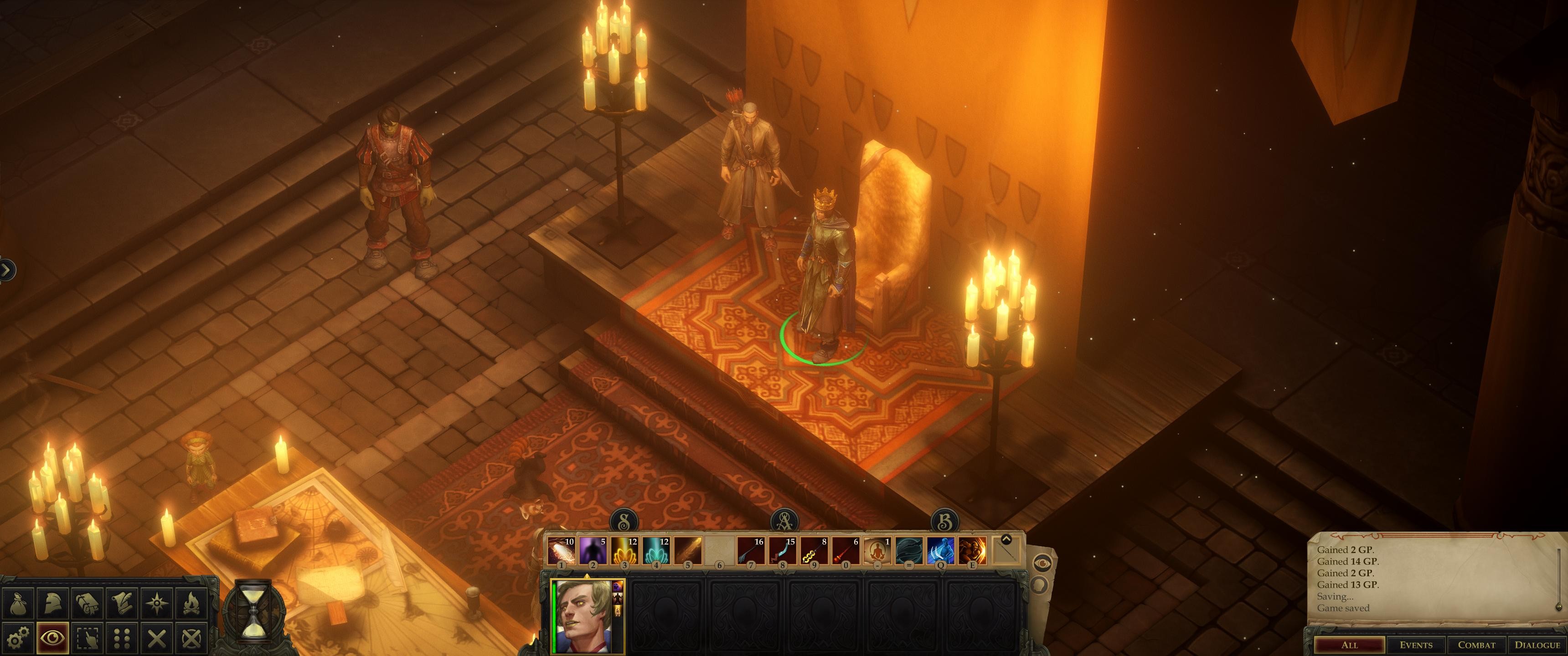
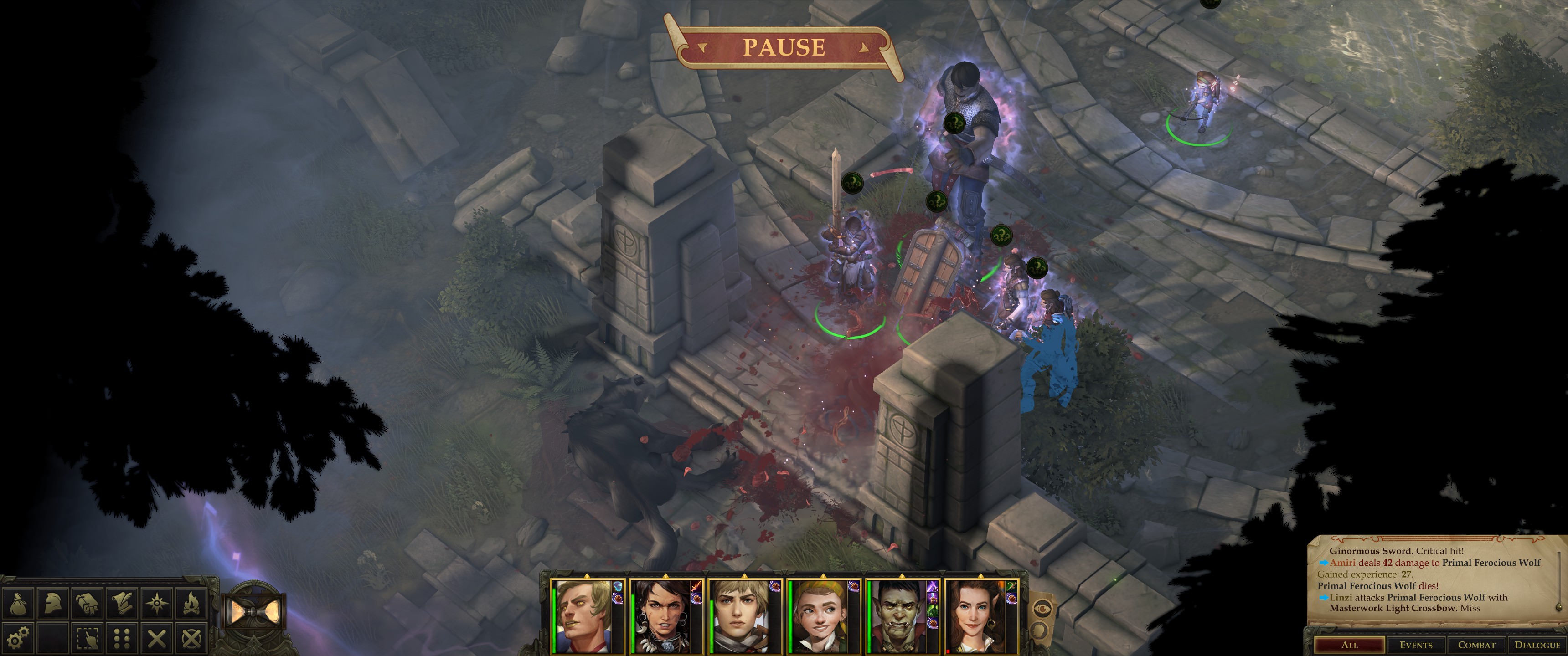
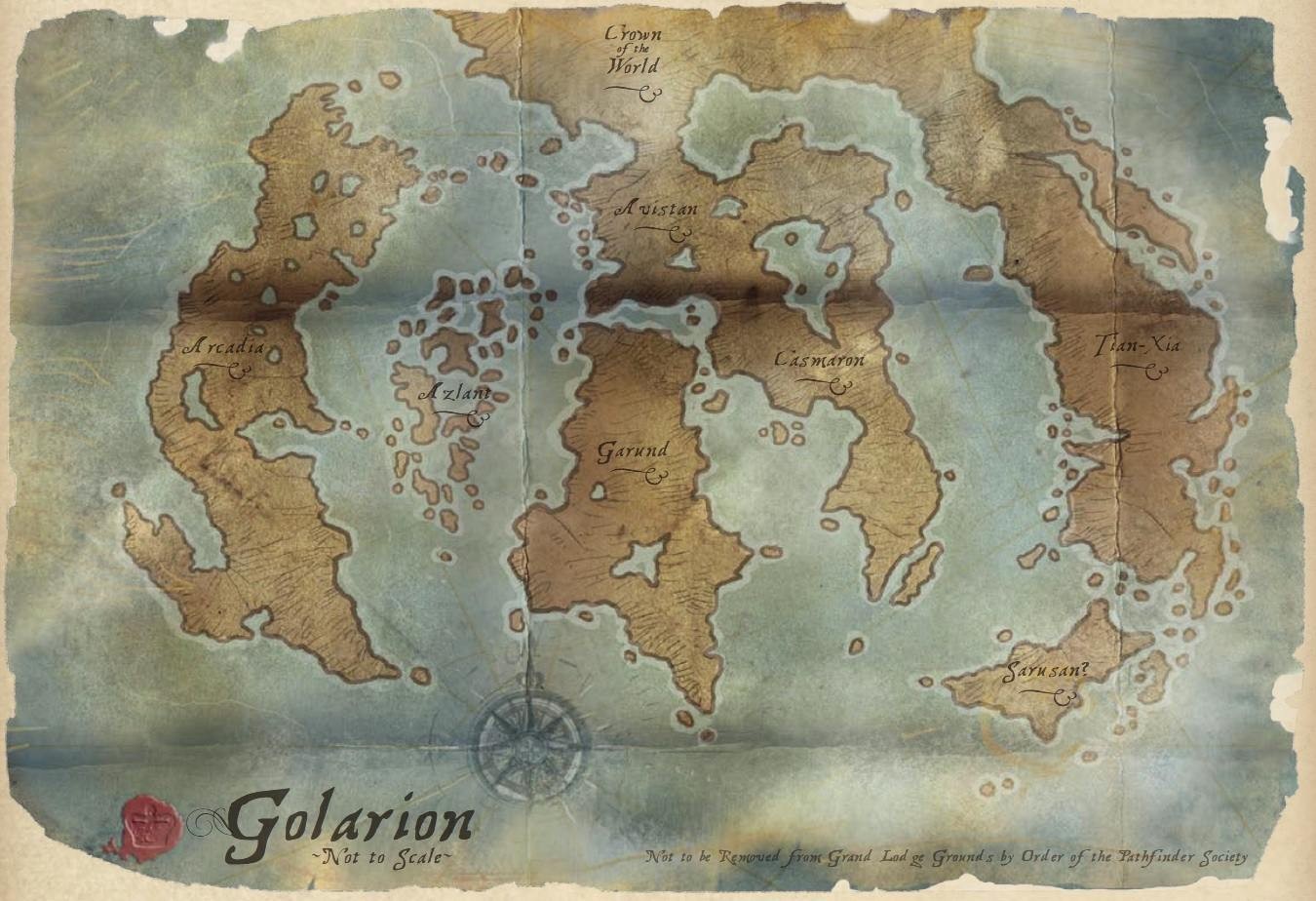


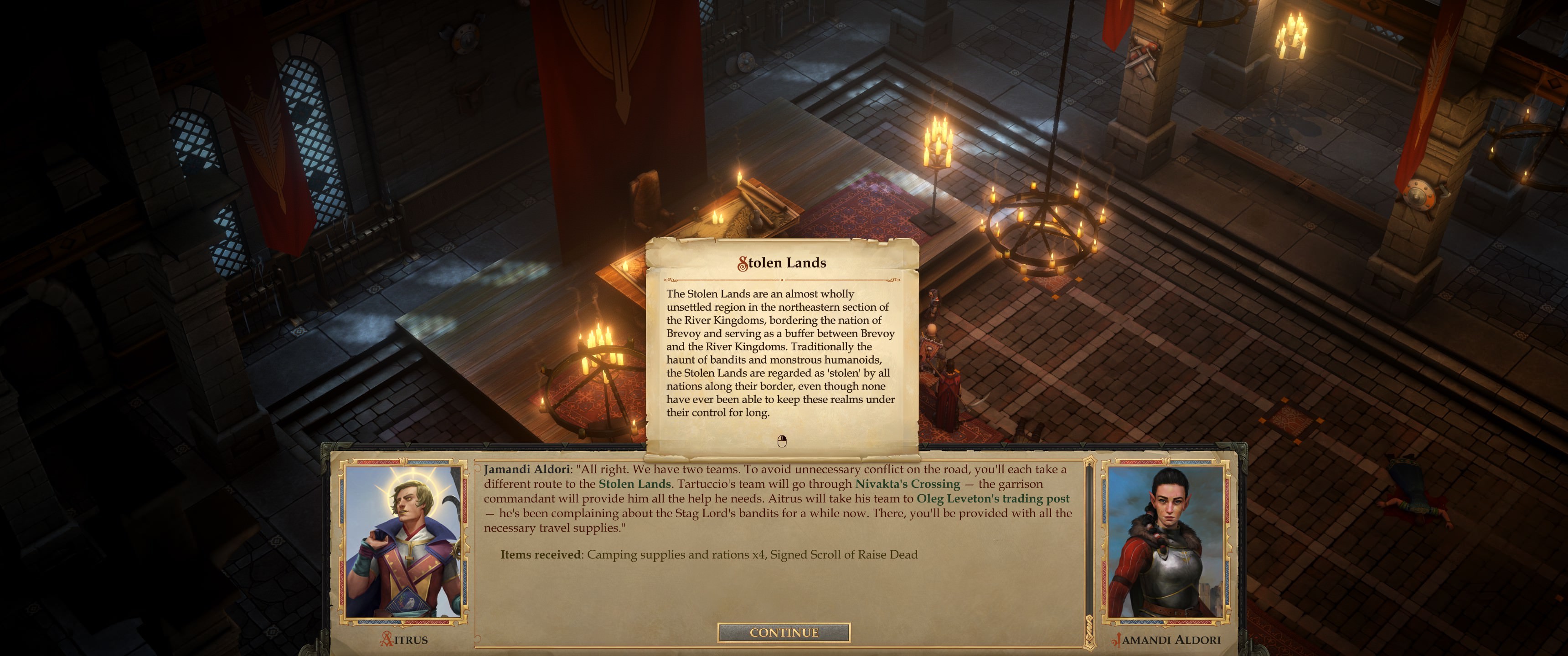
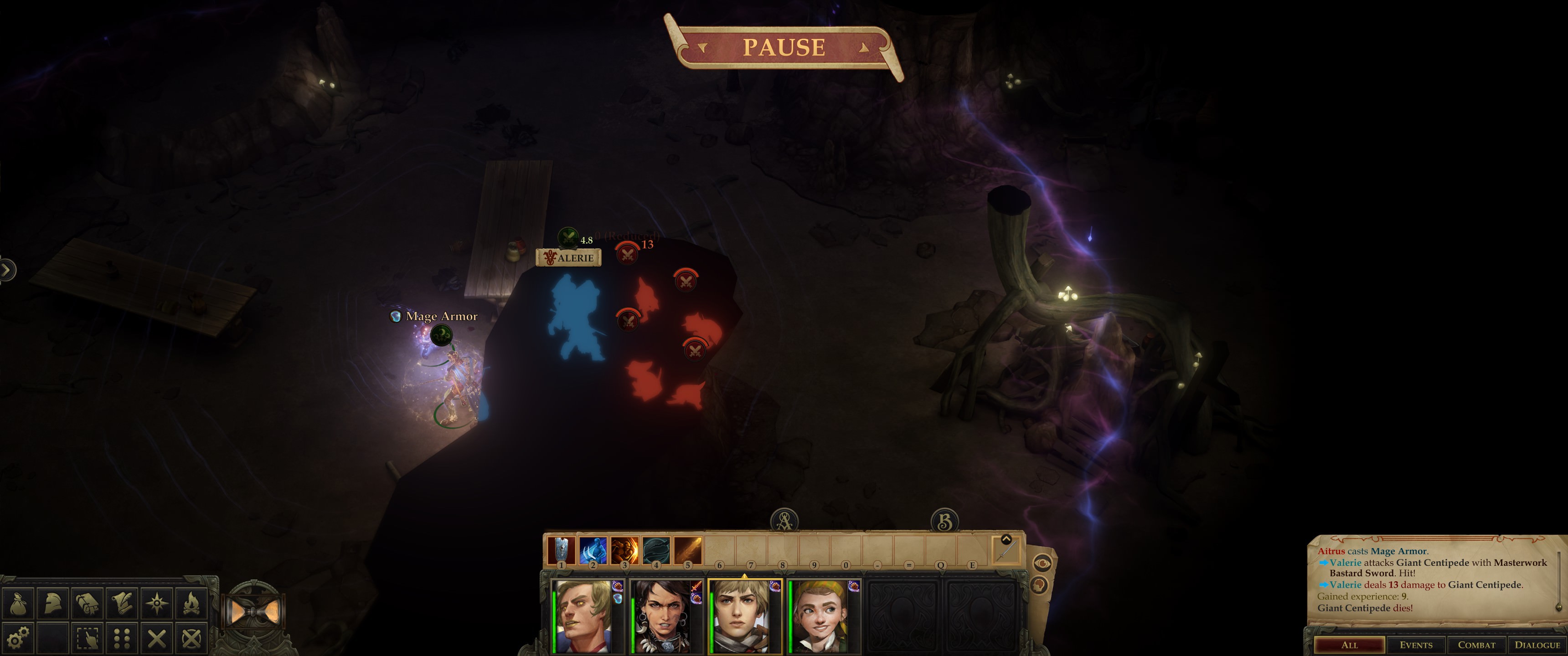
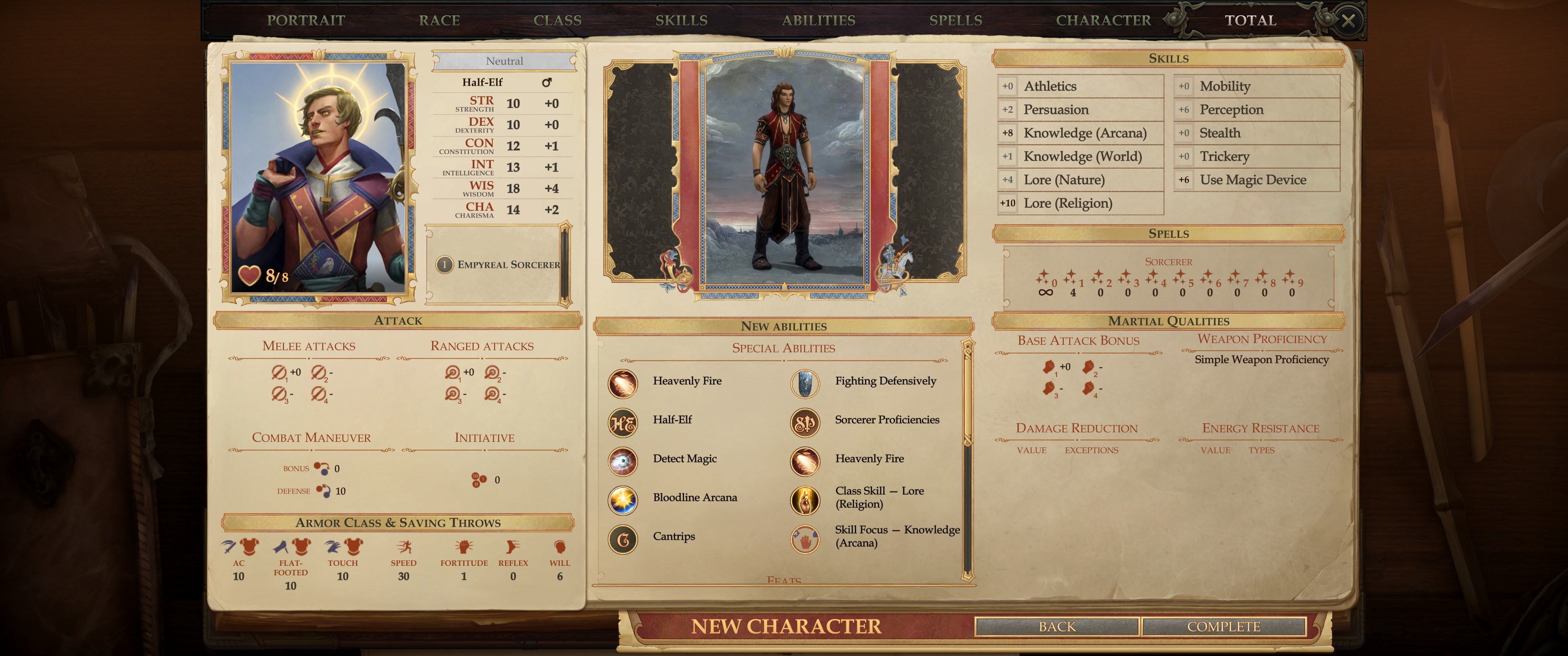
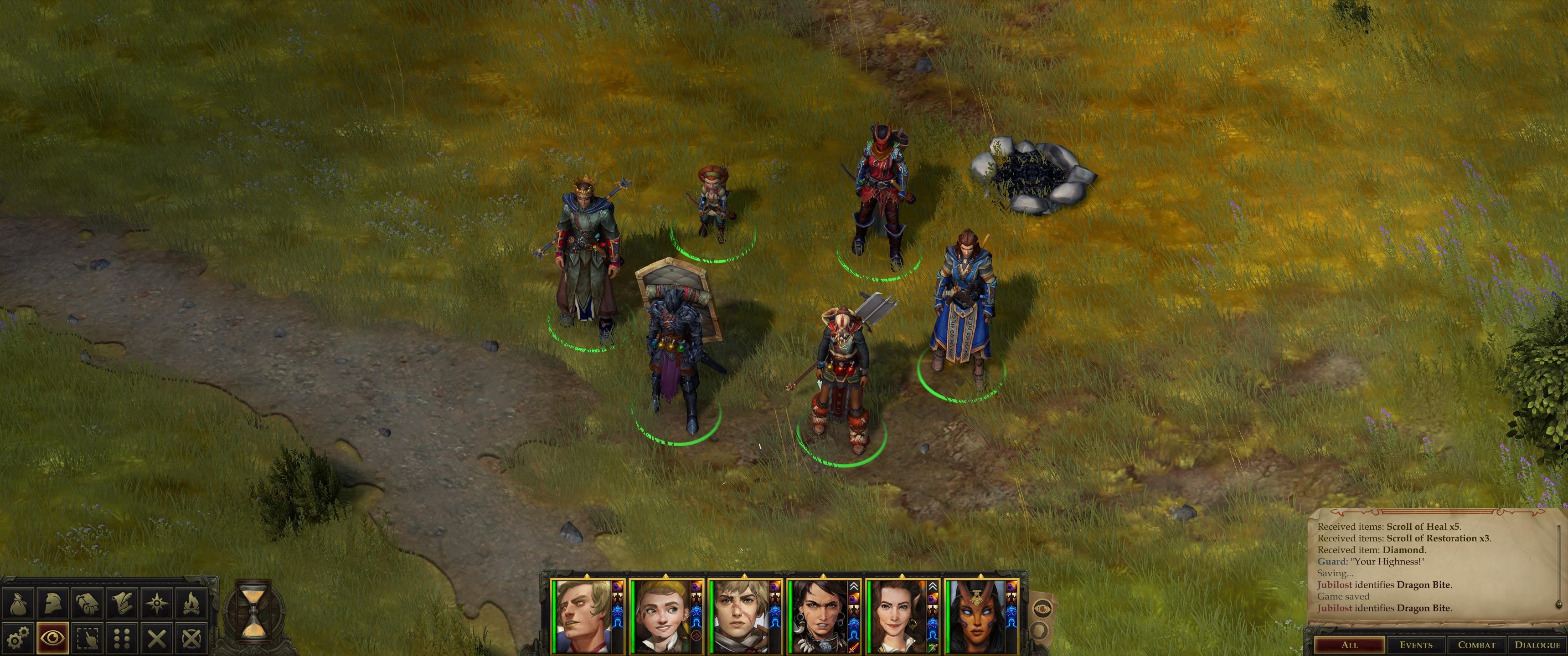
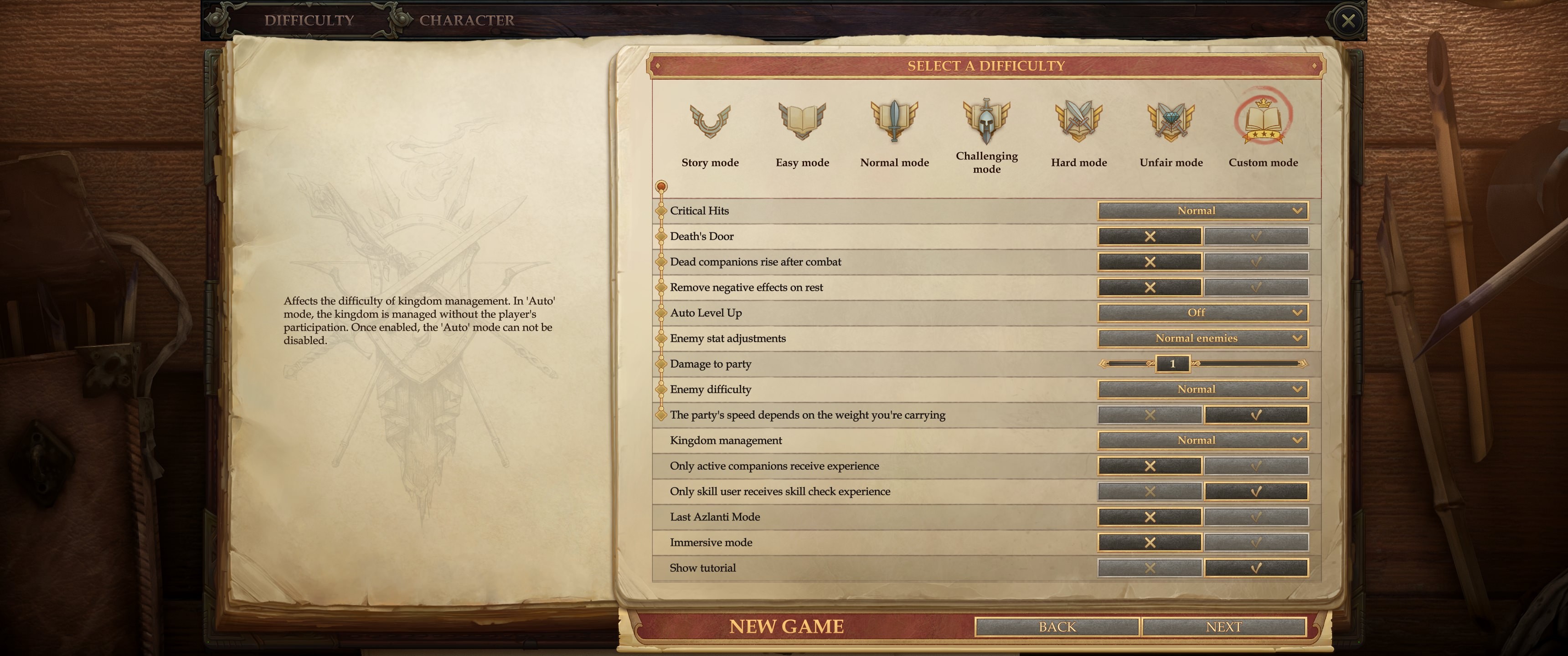
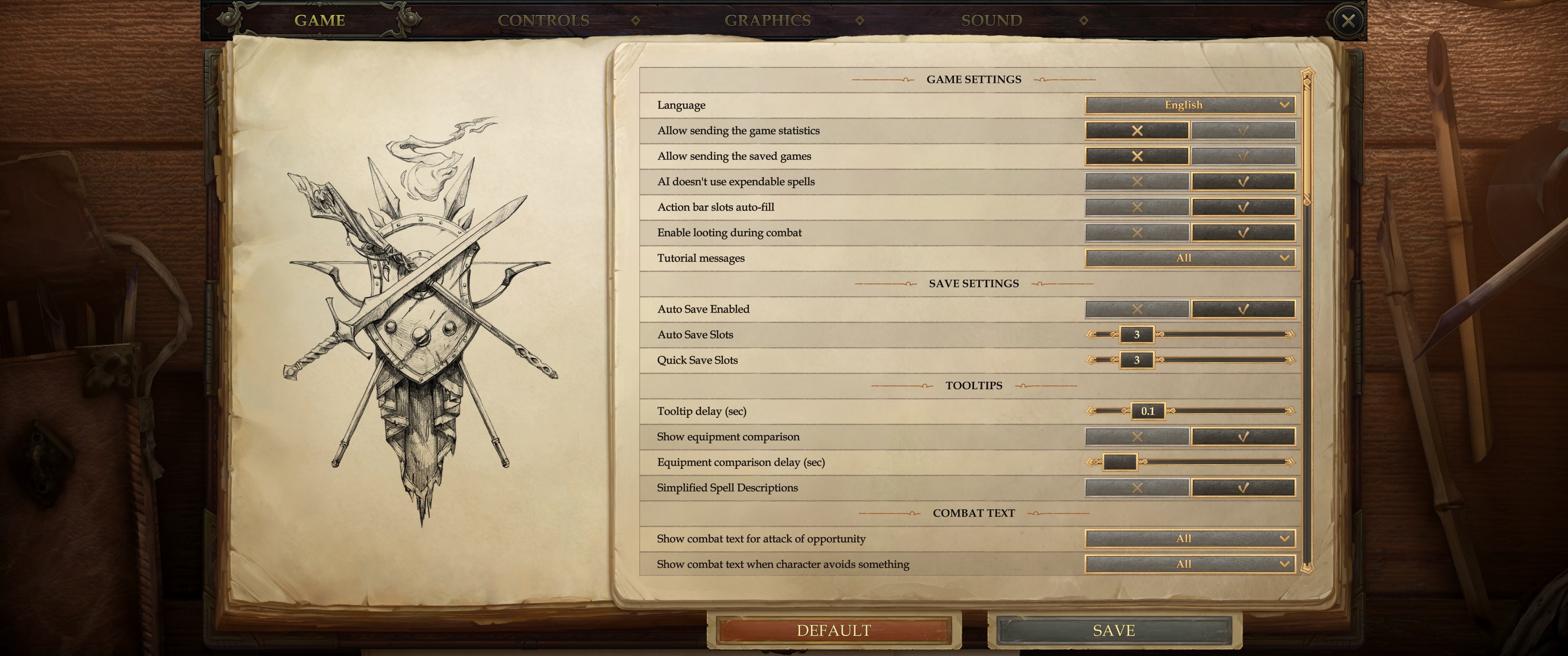

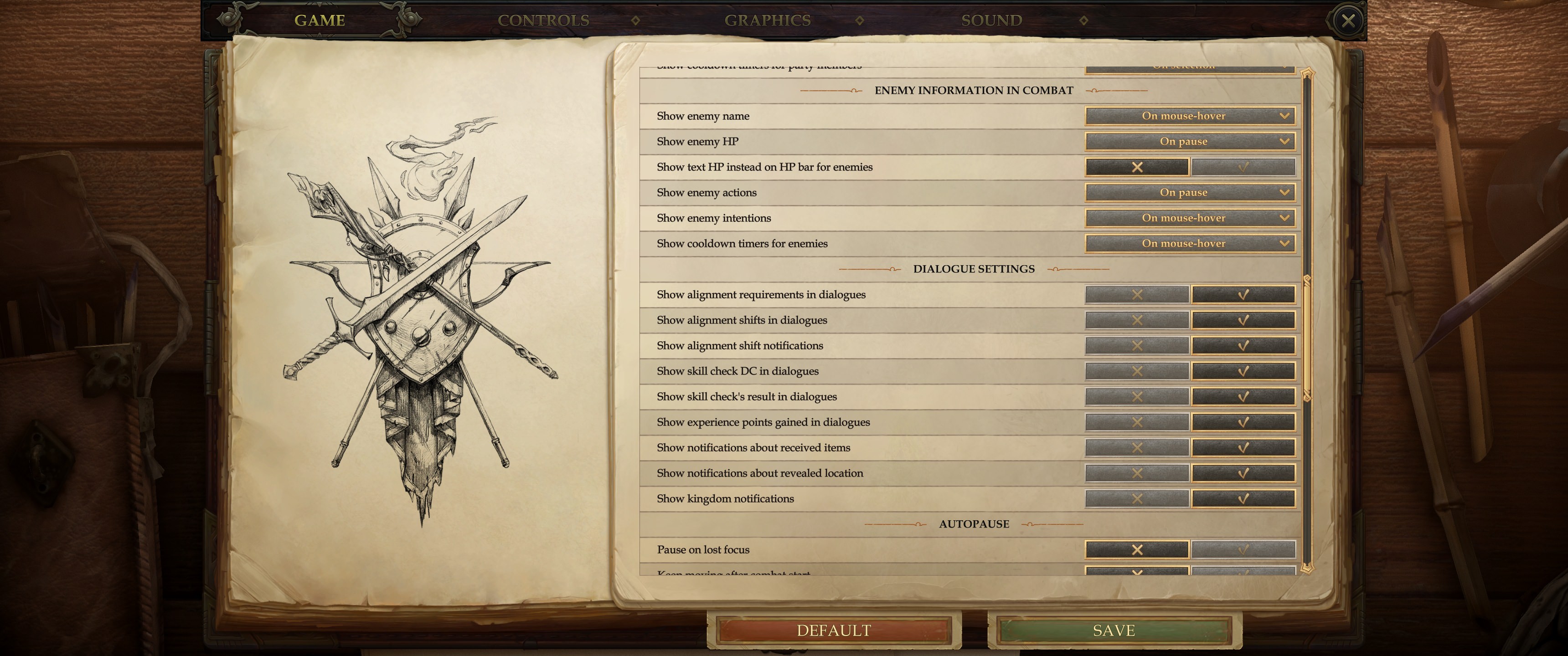

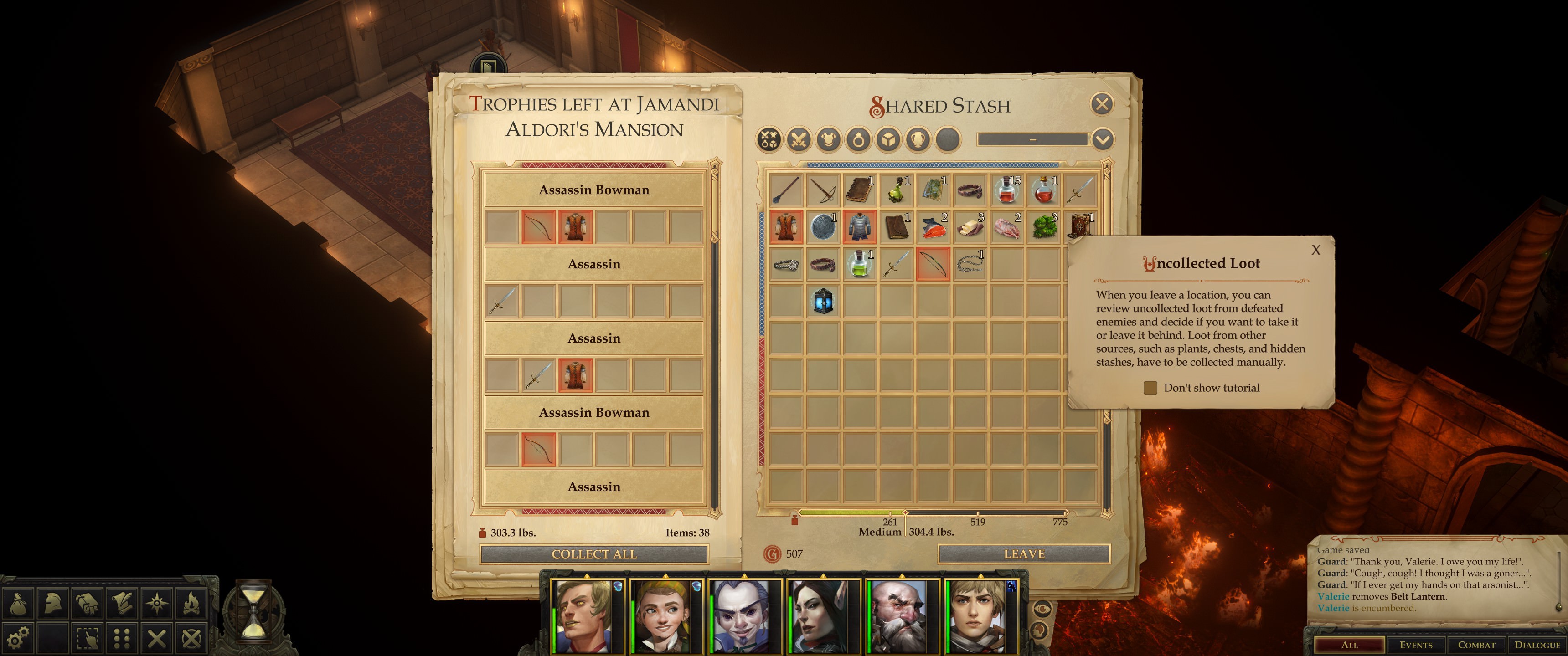
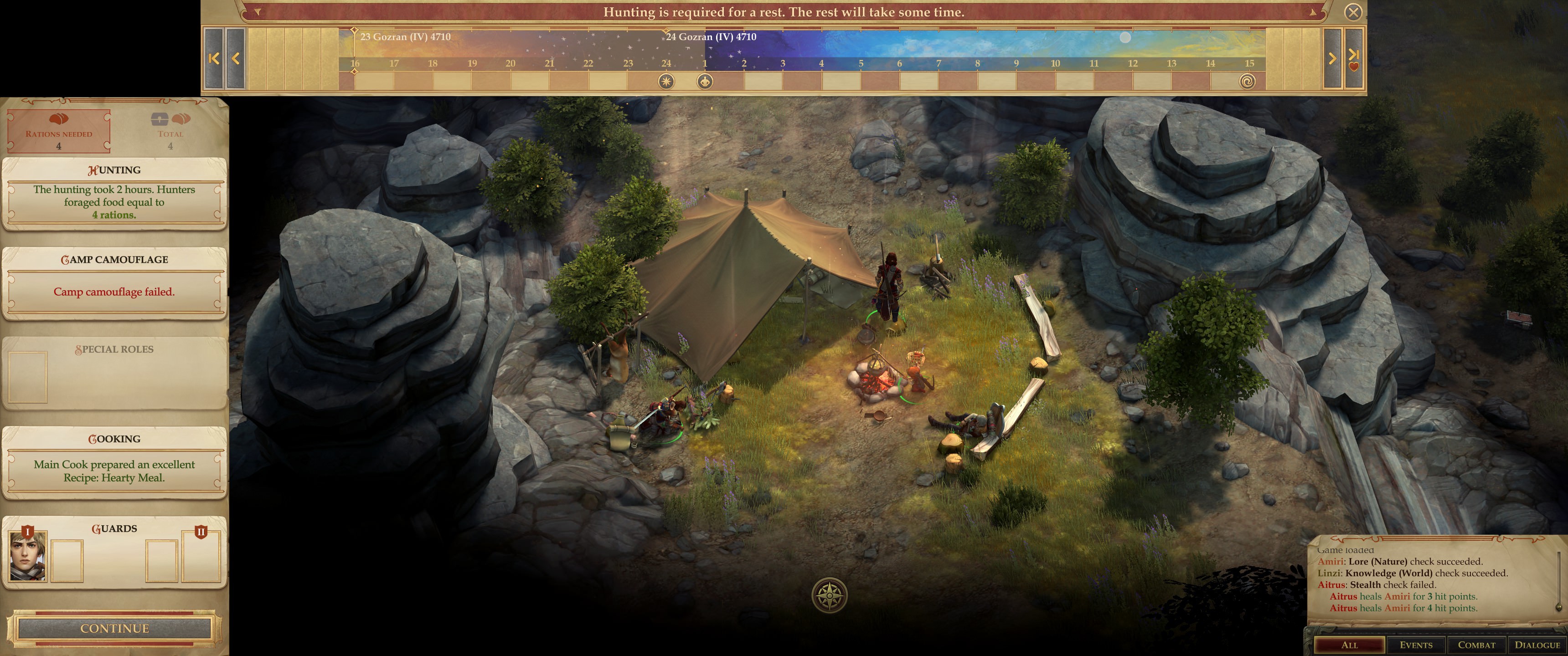
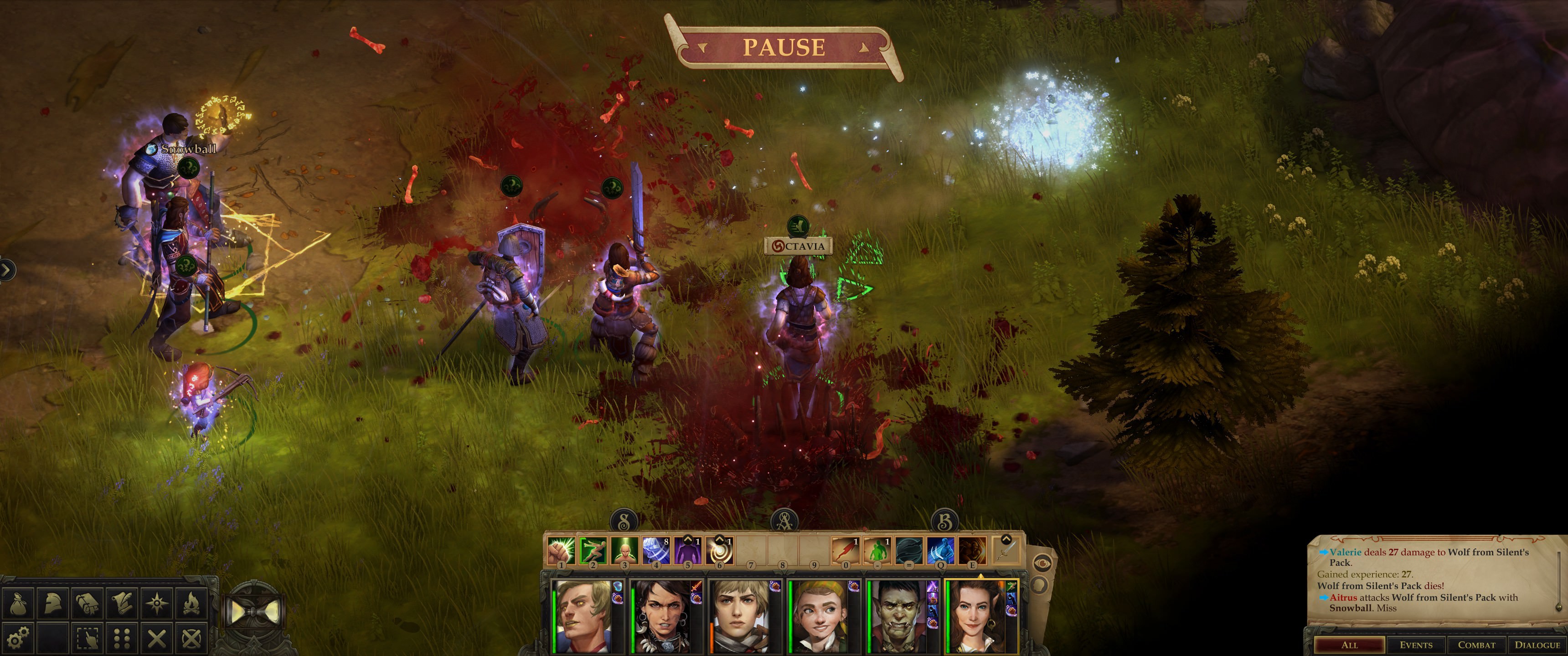
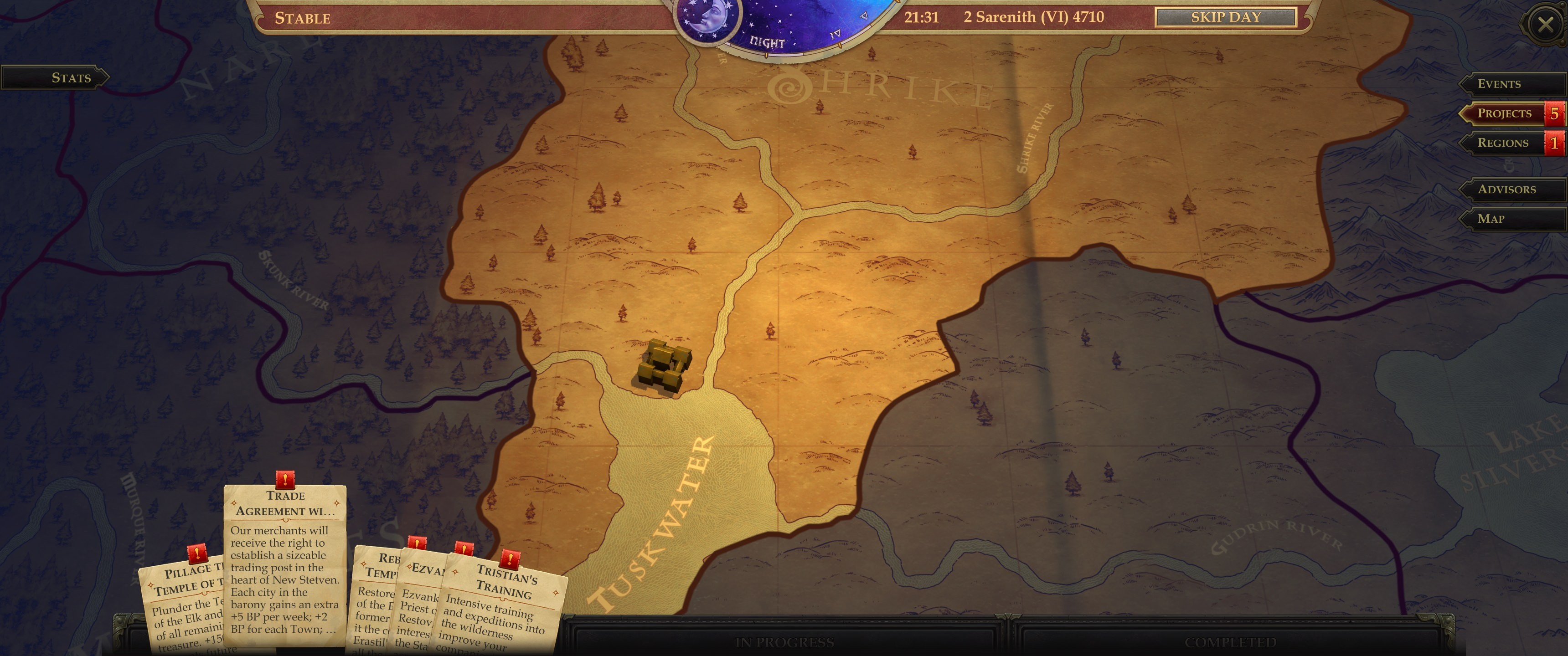
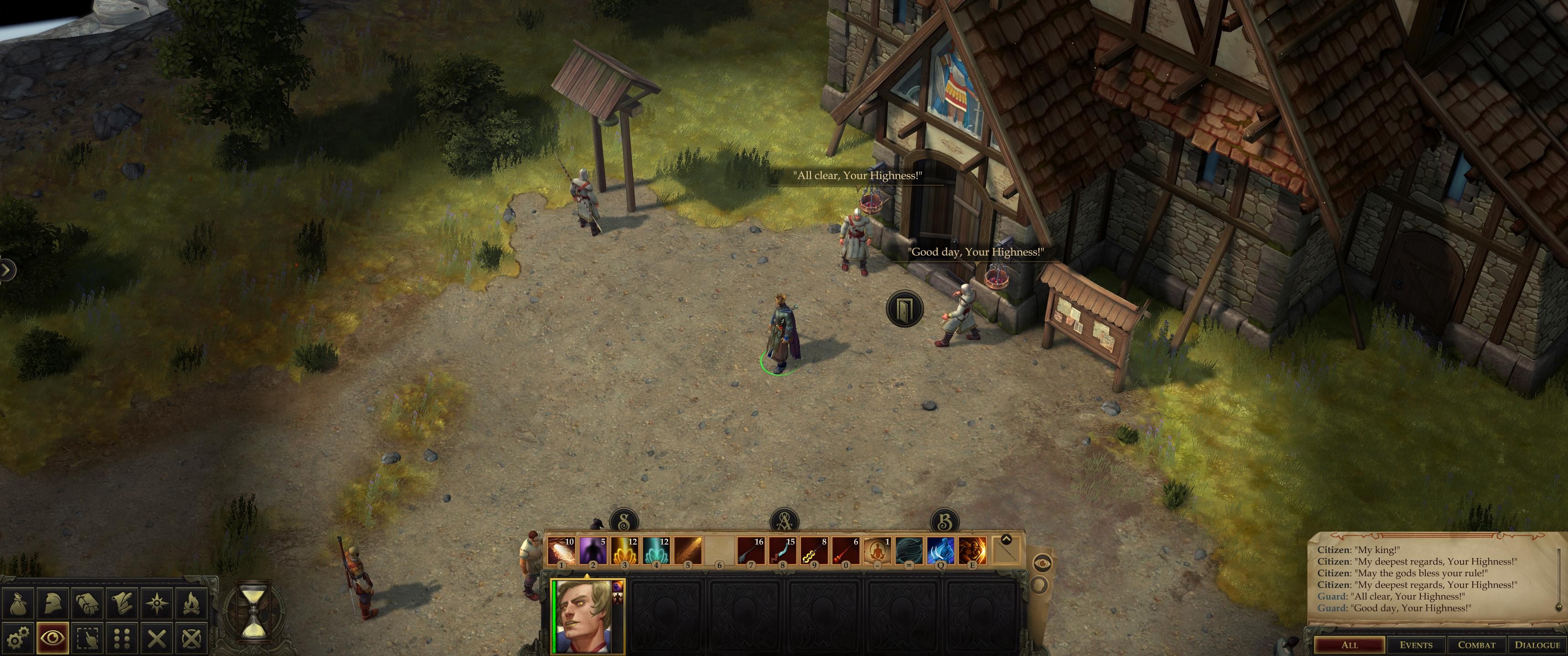
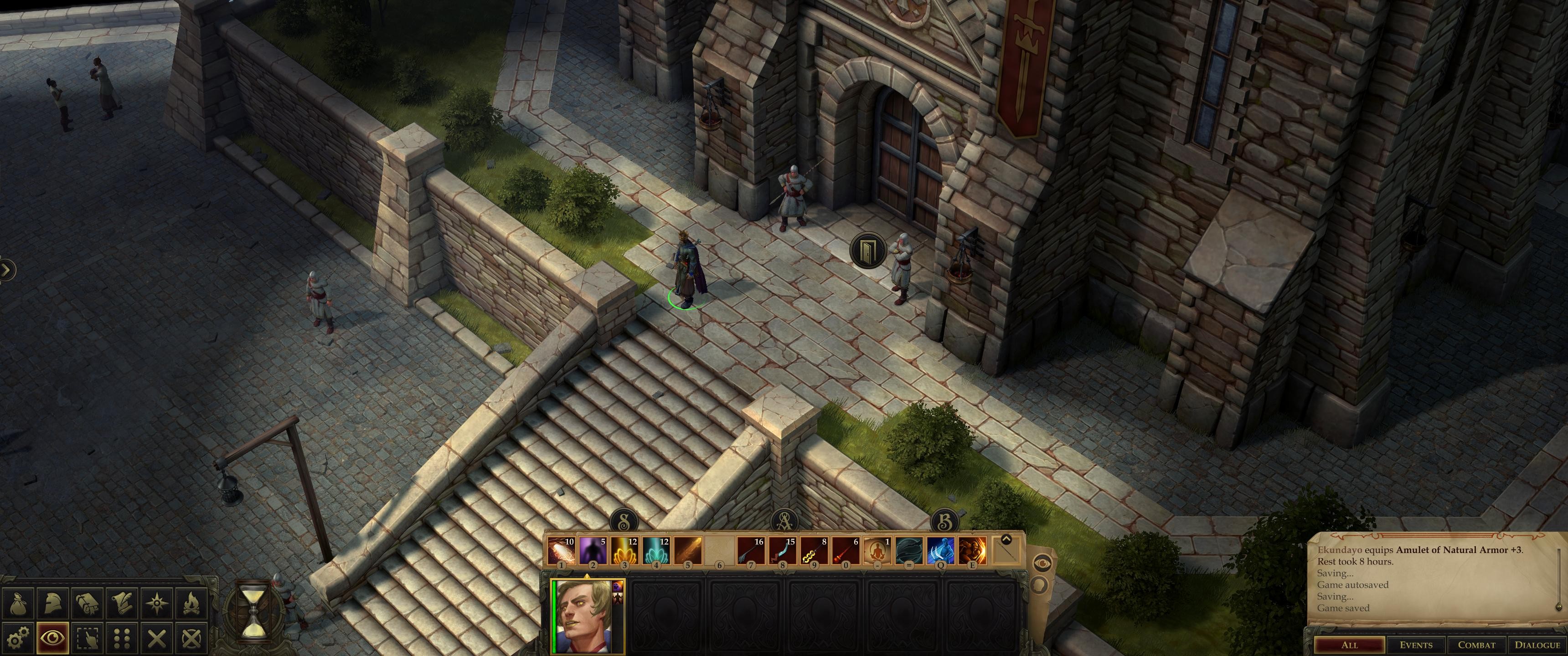

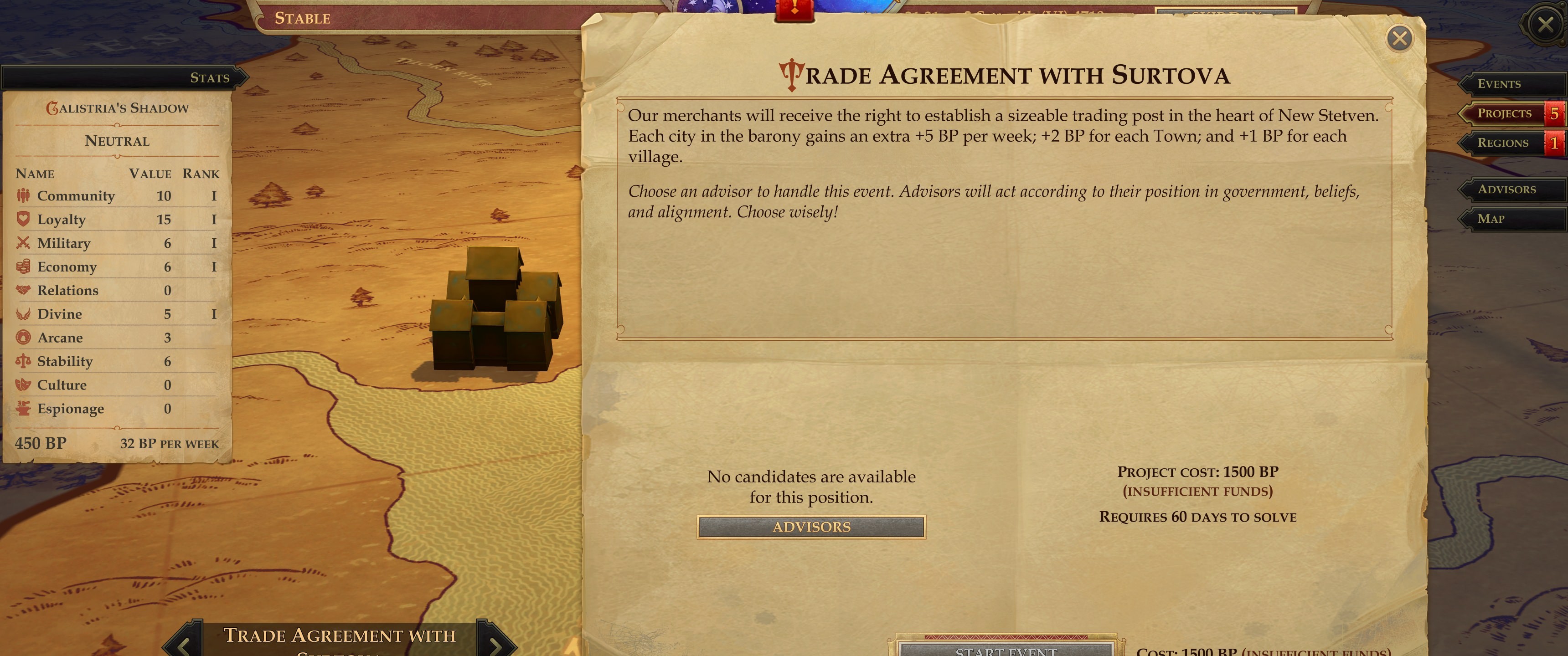
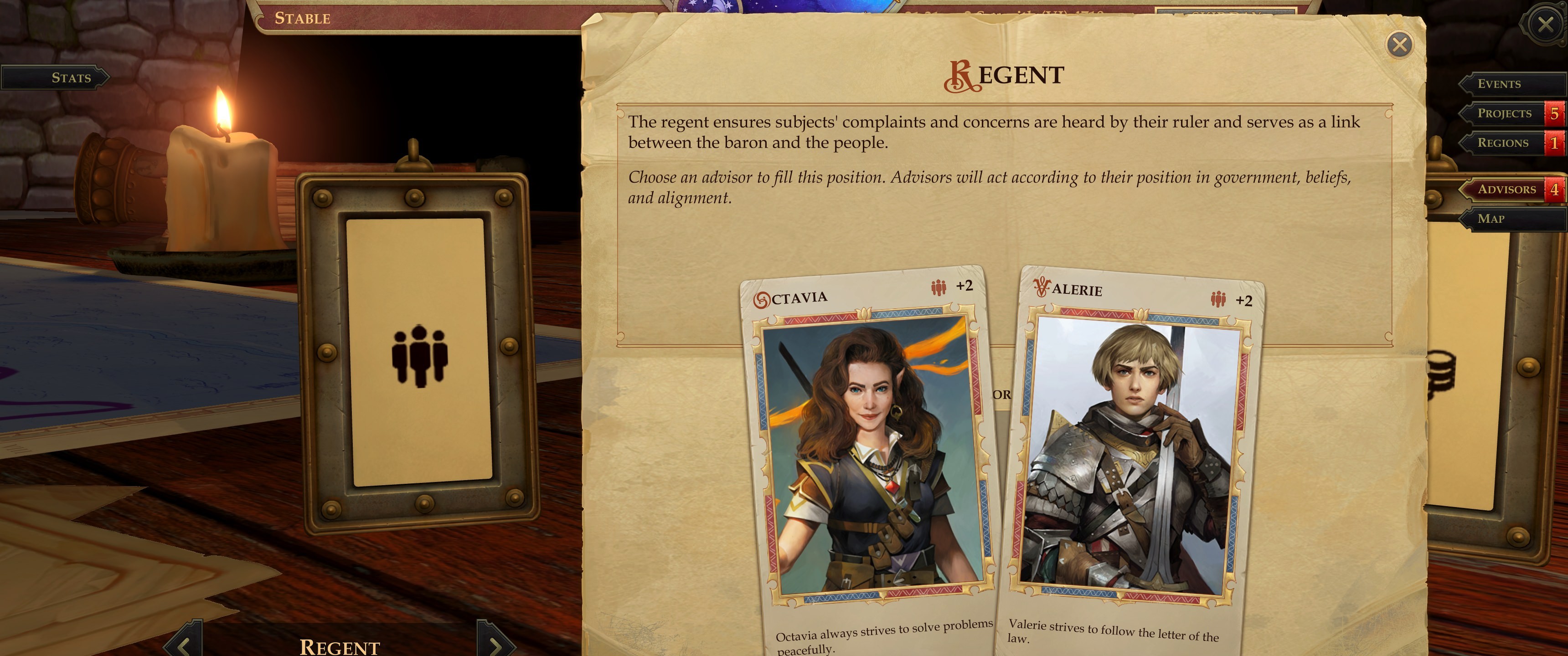
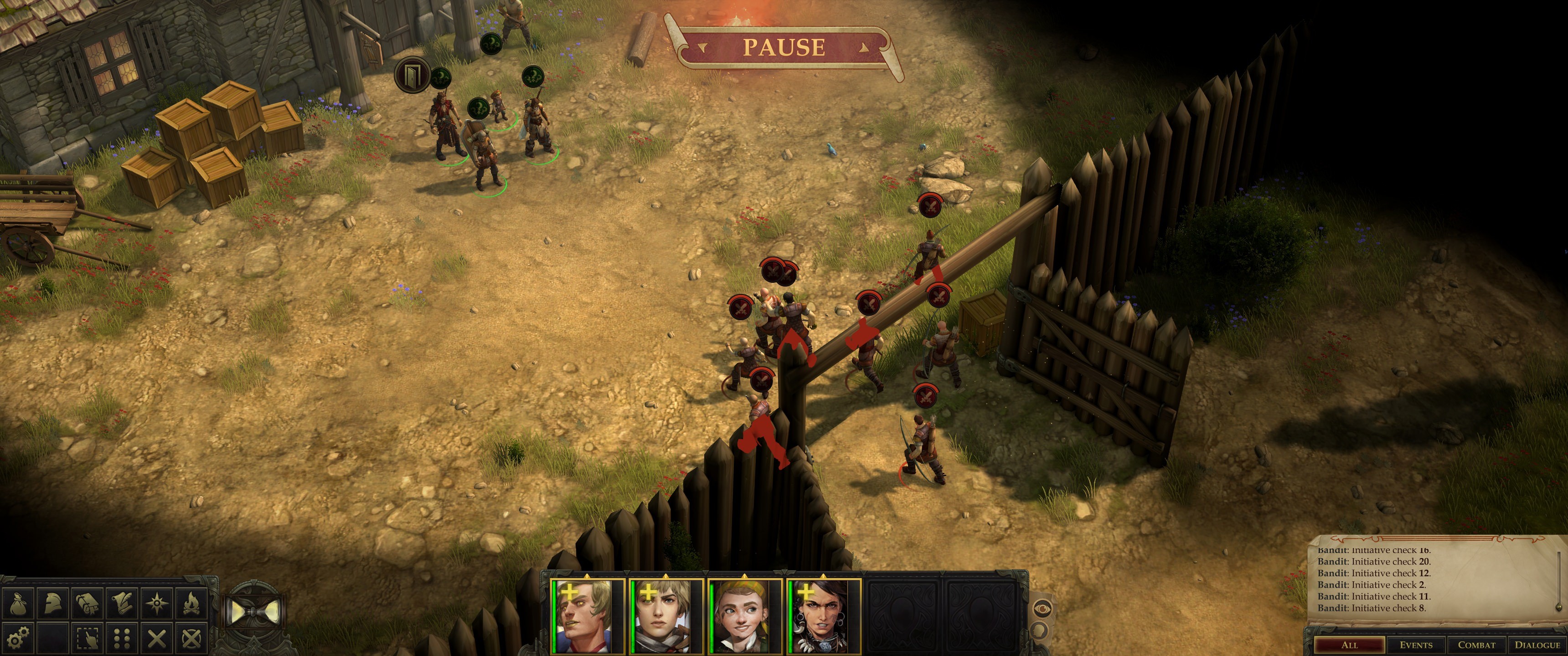
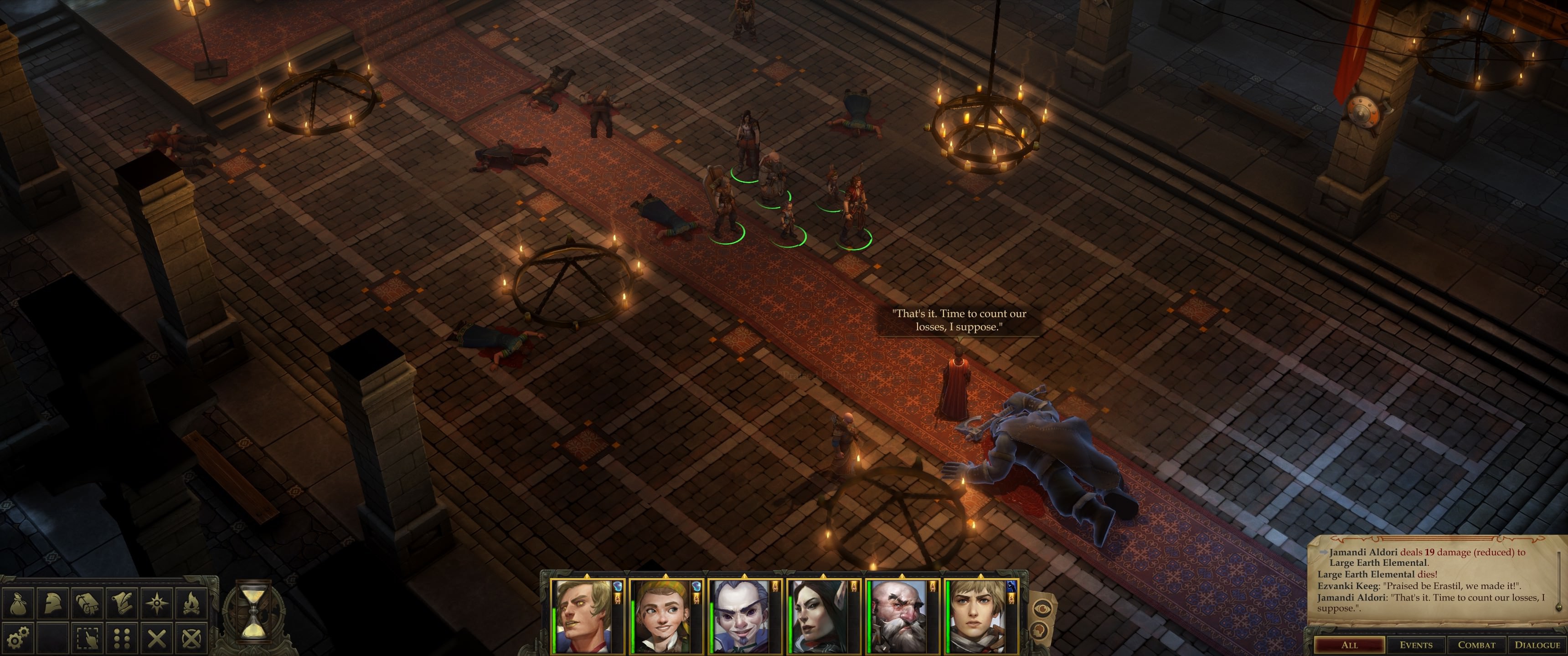
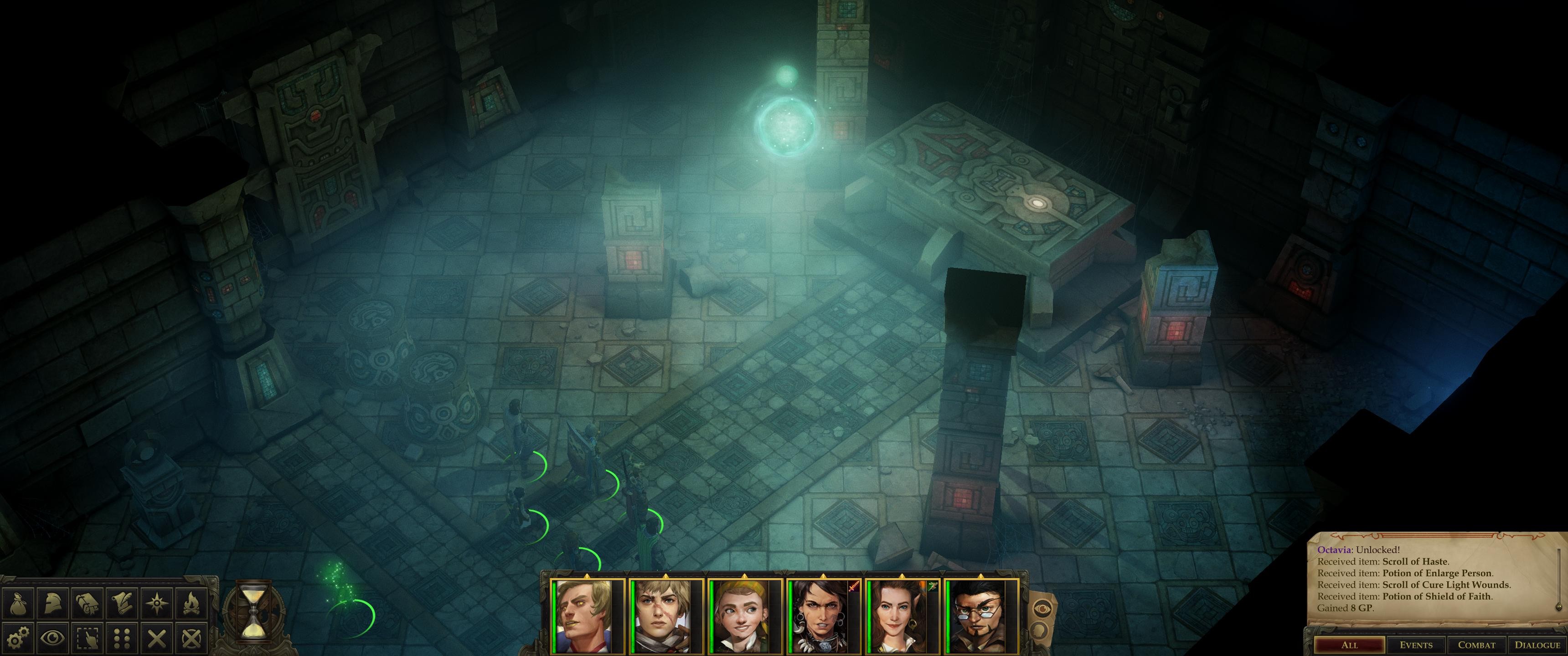
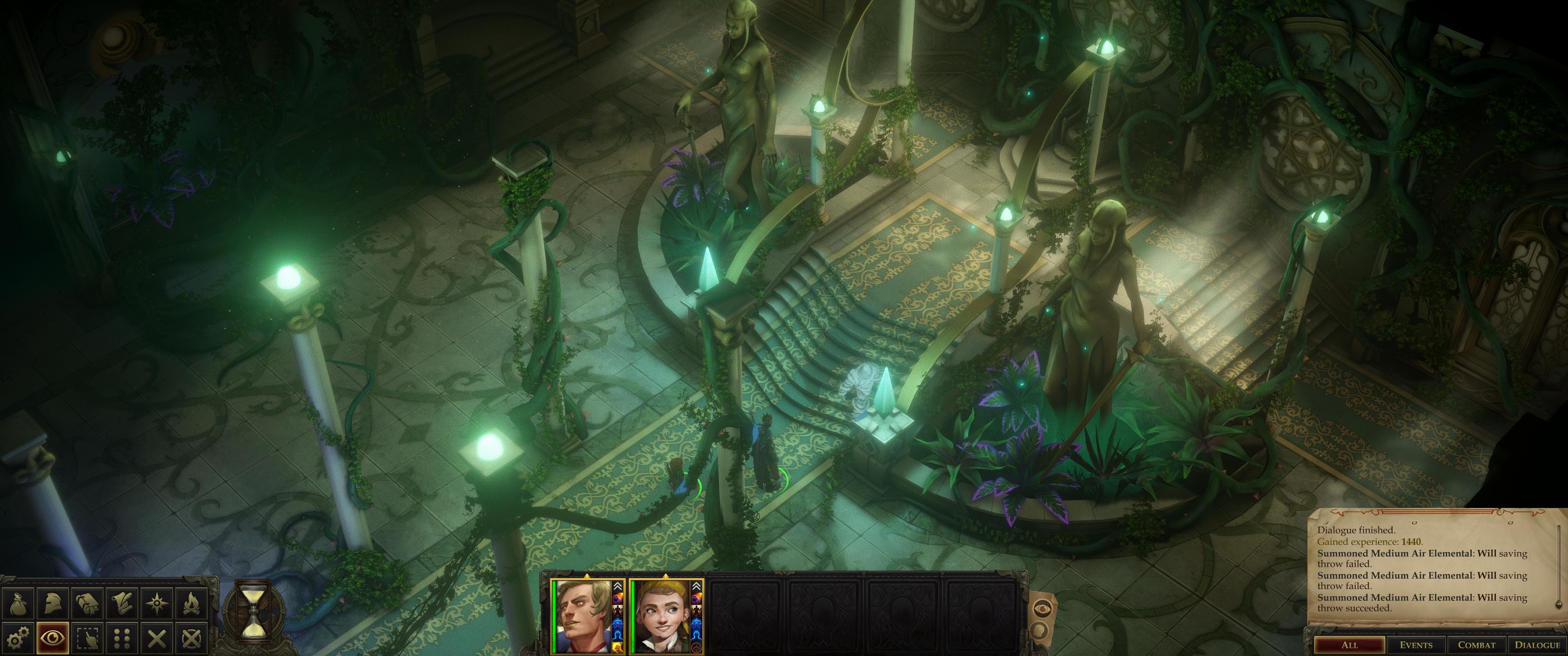
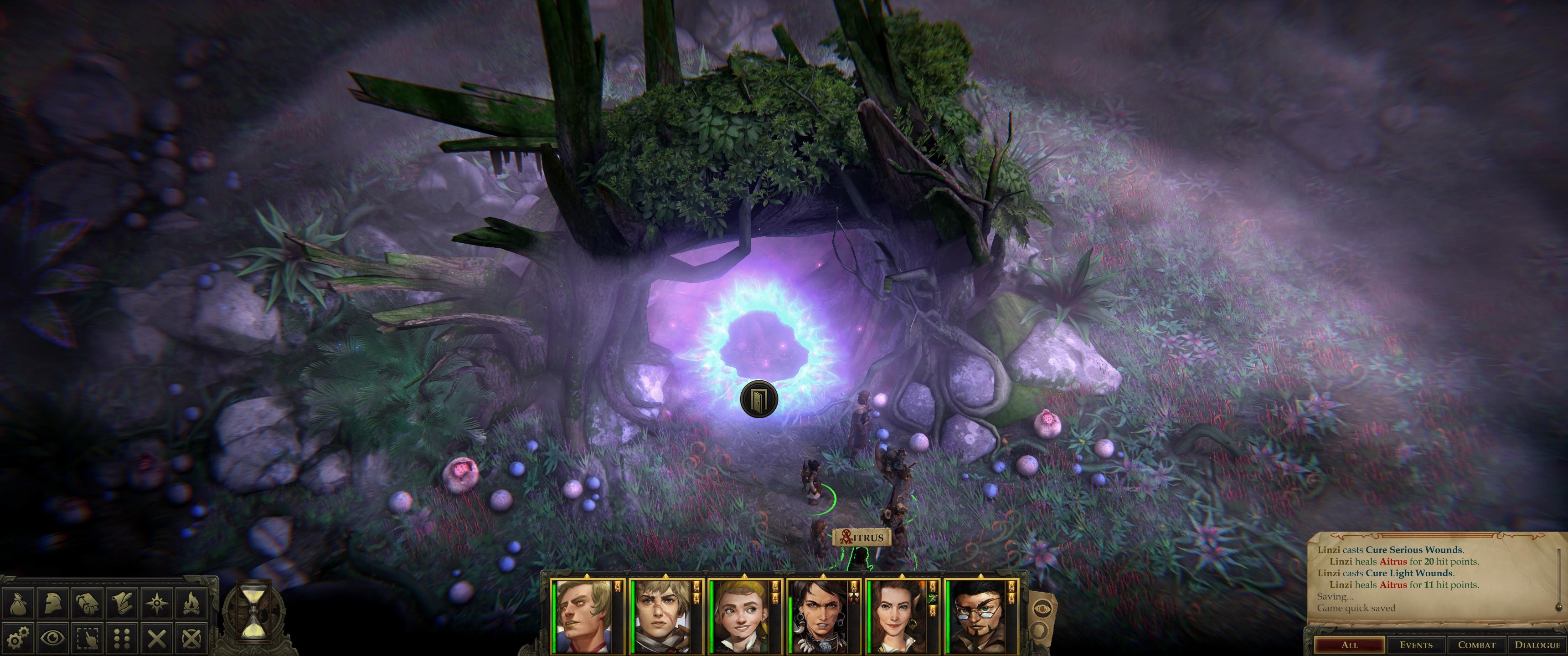
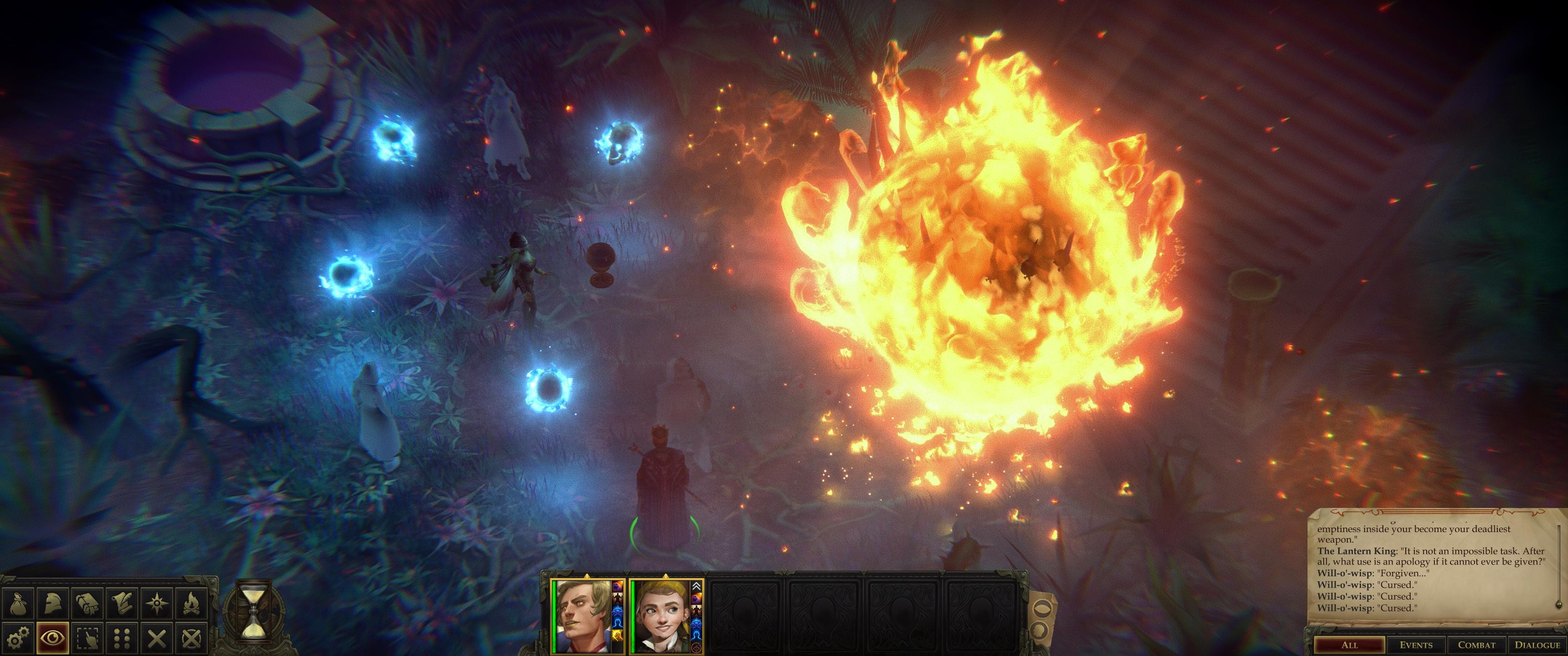

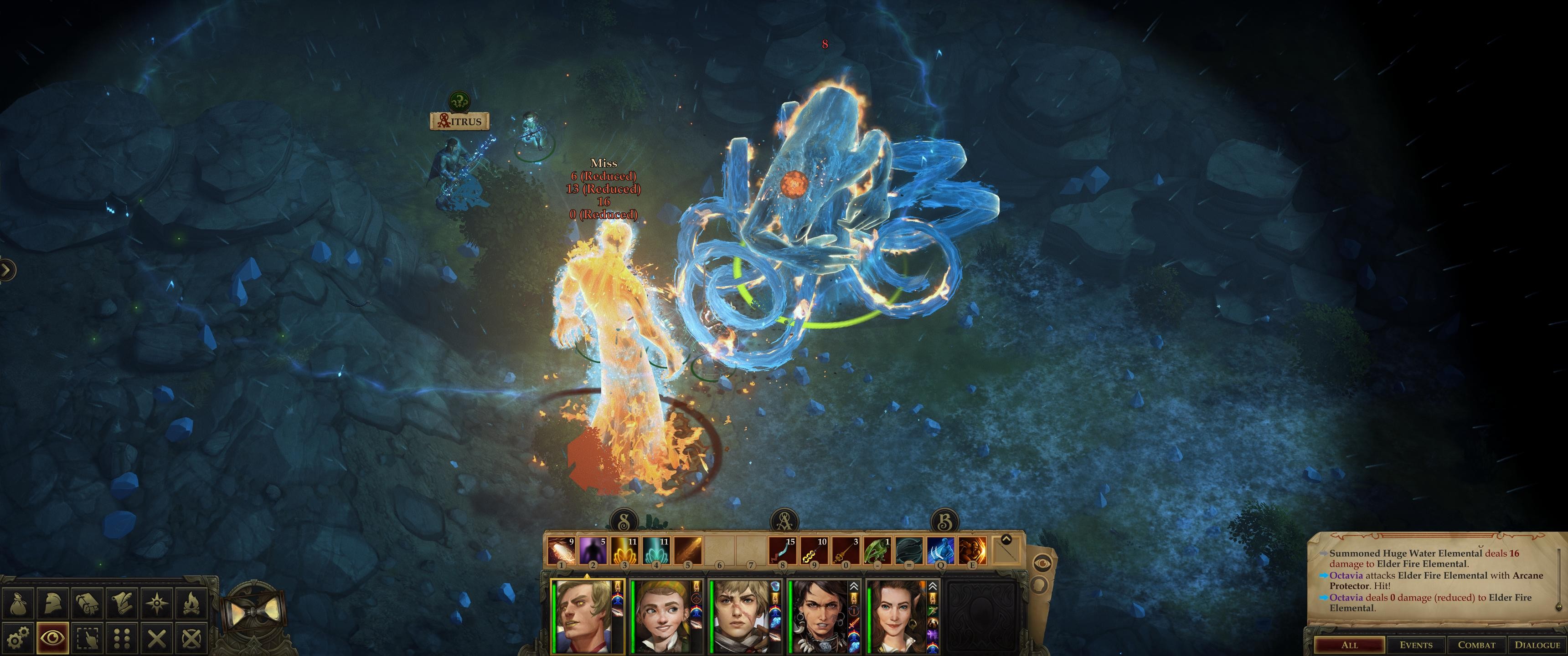
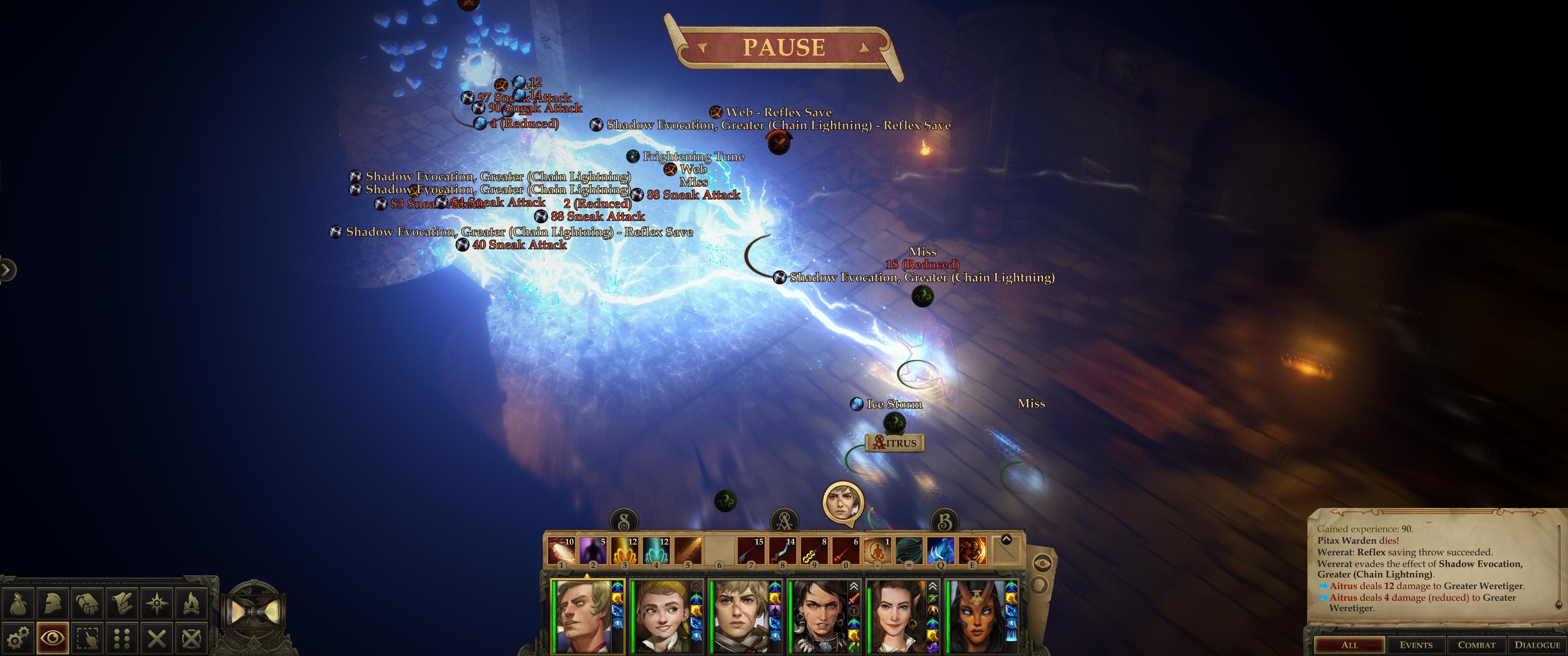
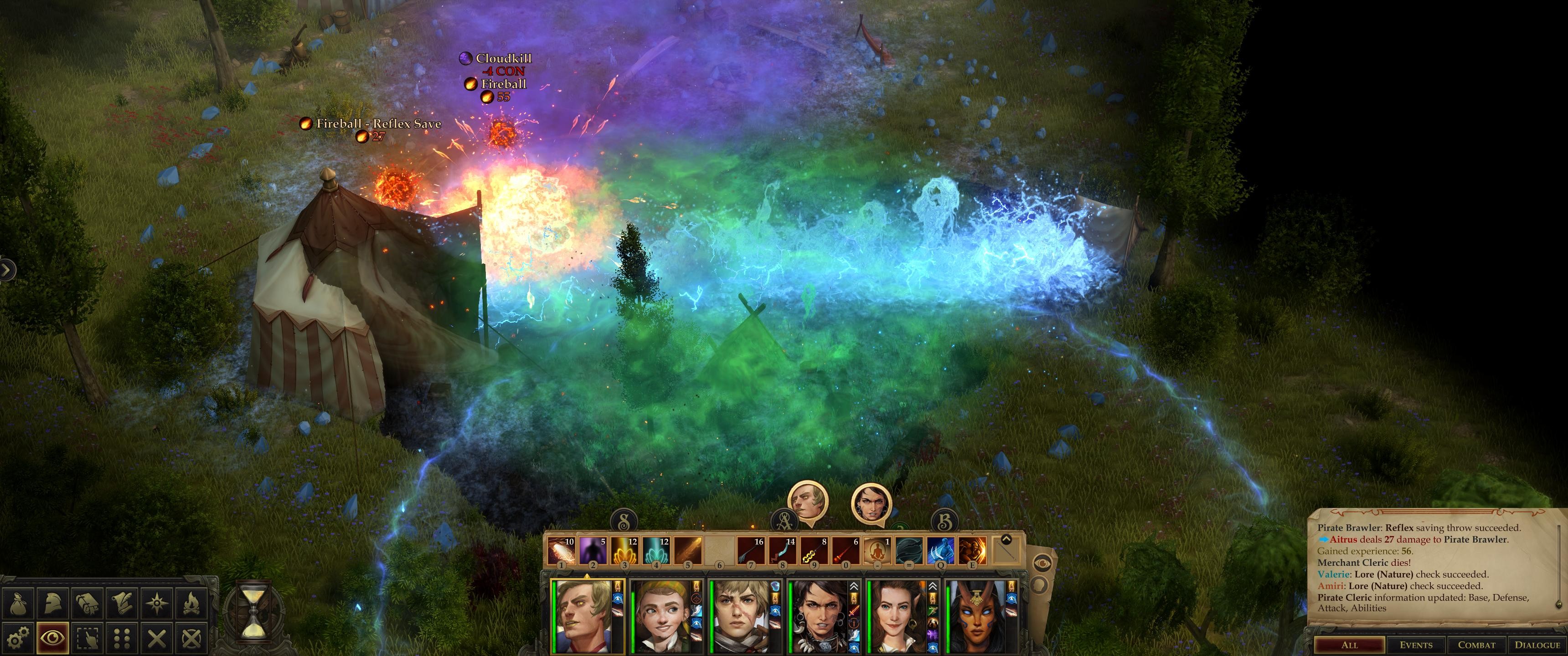

 (11 votes, average: 4.45 out of 5)
(11 votes, average: 4.45 out of 5)
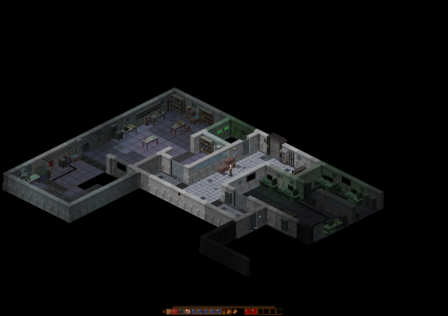


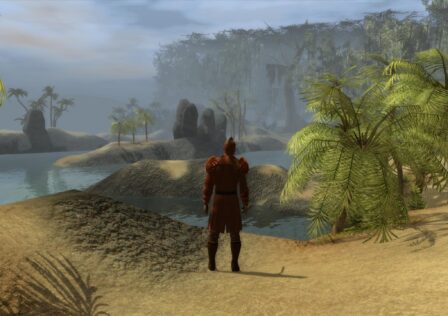

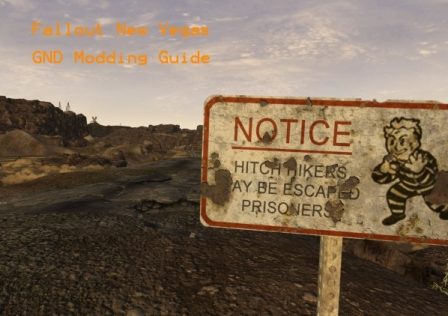


Really detailed review. Seems like a complex enough RPG to keep me engaged and care about the story and people which seems to be my issue with games lately.
What do you think of the sequel? Gameplay diversity seems definitely there too.
The sequel is even stronger gameplay-wise for having more skills, character builds, and mythic levels, although still has many of the same limitations like the inability to attack just anyone any time (reduced role-playing potential compared to some of the classics), I believe dead companions always rise again after combat like NWN 2 (unless it’s a difficulty option I missed), supreme AI deficiencies who will always run right into grease and pits, and the spell selection is shockingly limited: no powerful teleportation magic, no scrying, no flight spells or air walk or levitate (though it’s isometric so of course not),… Read more »